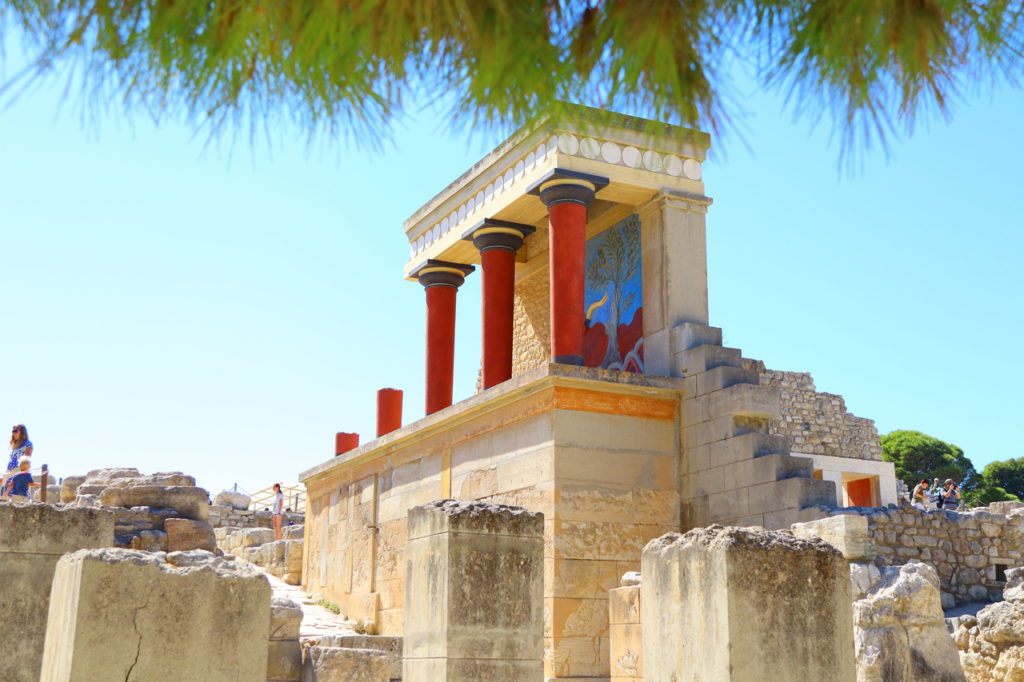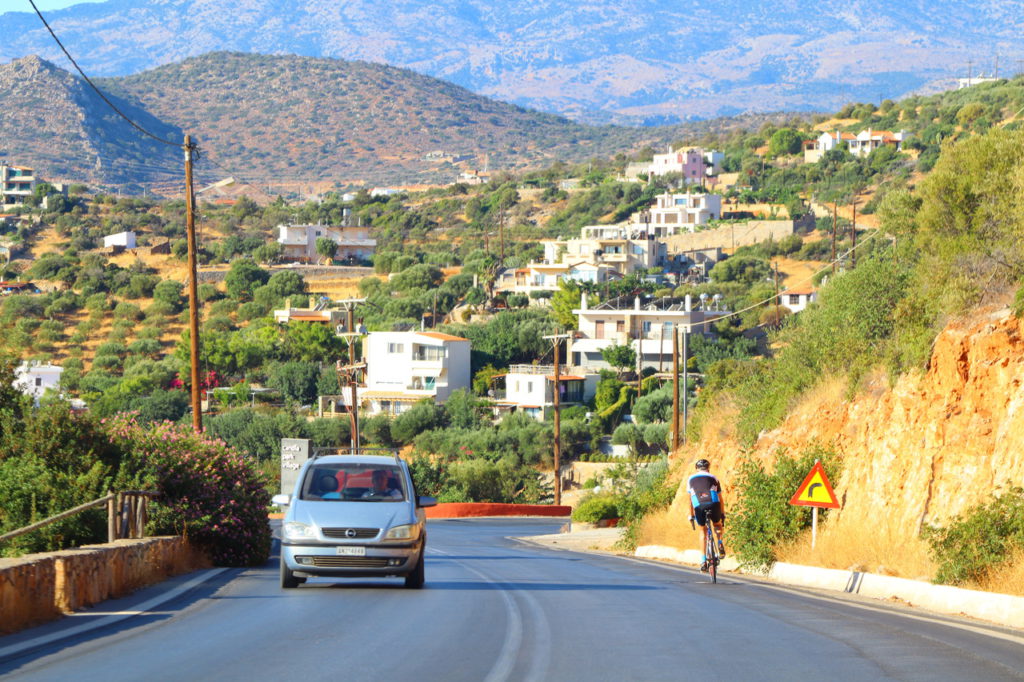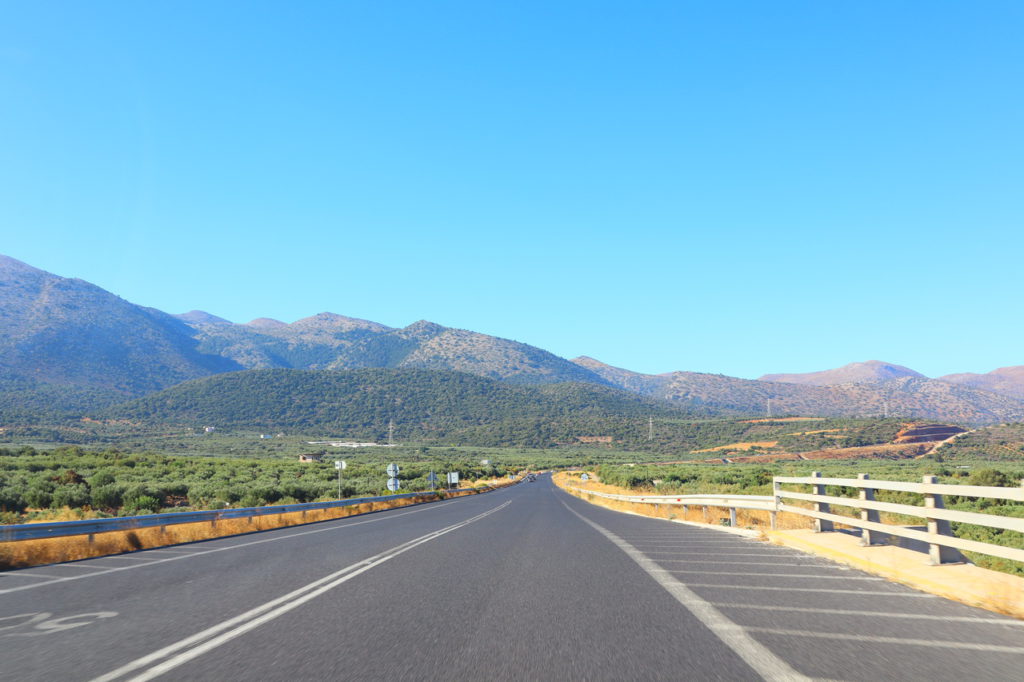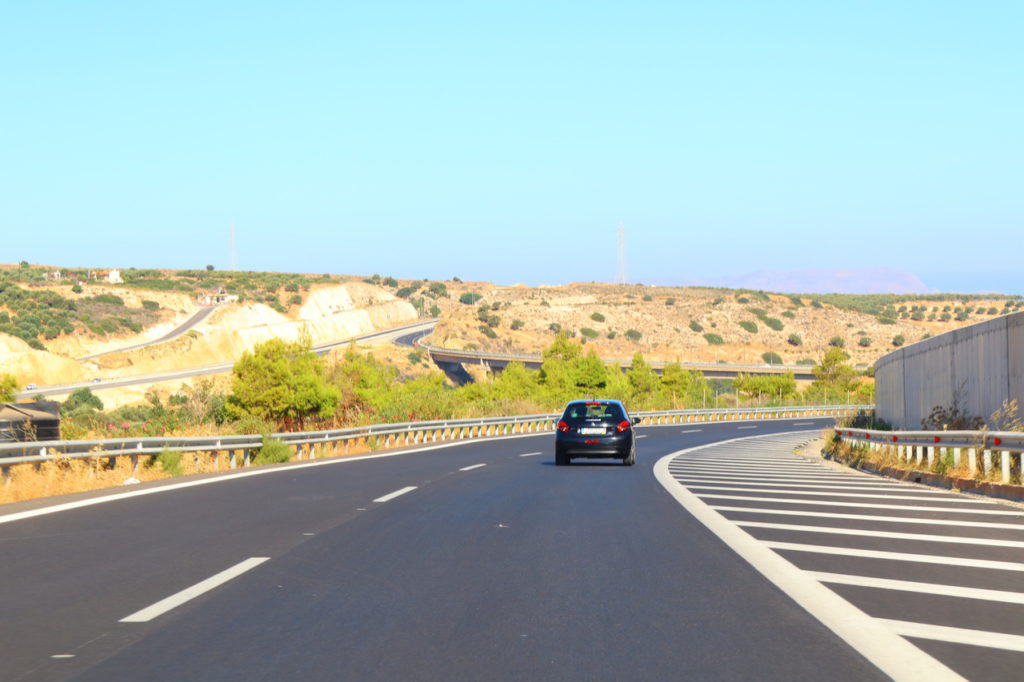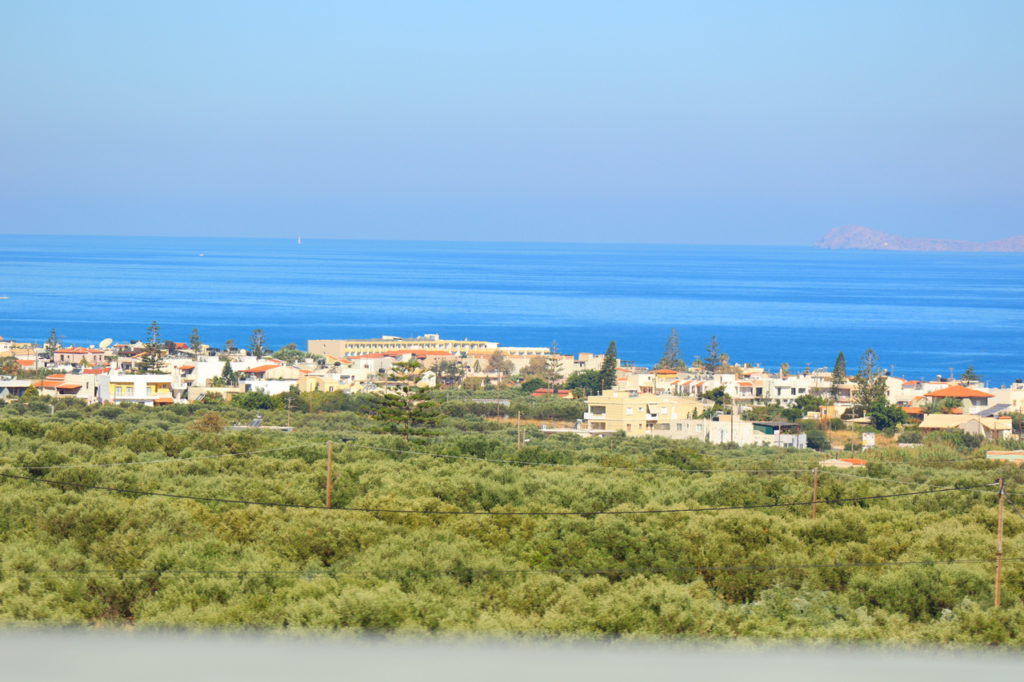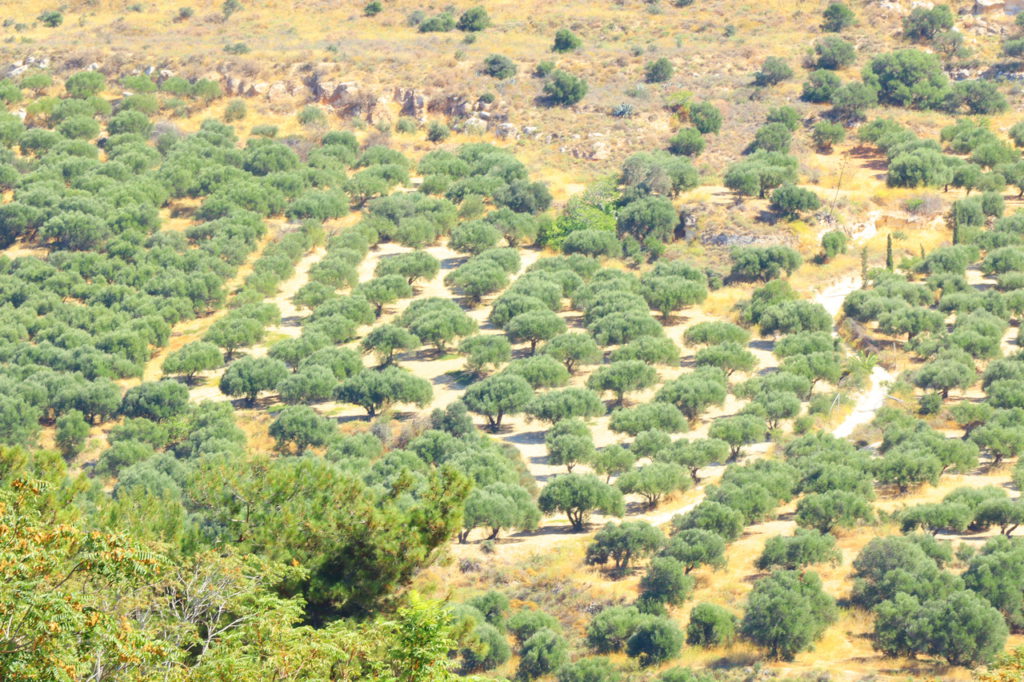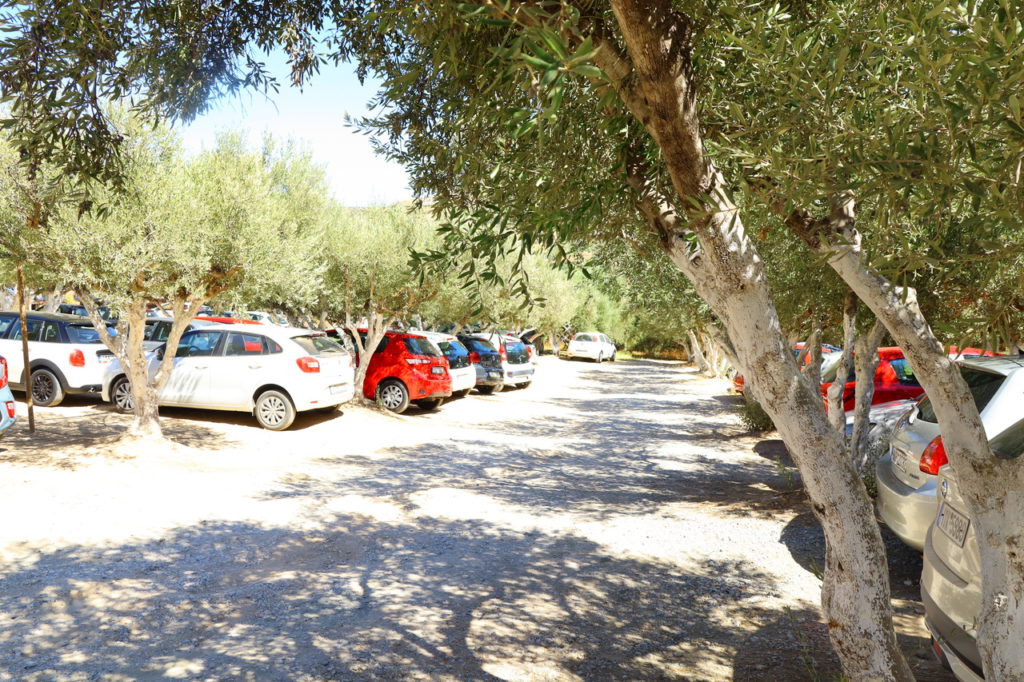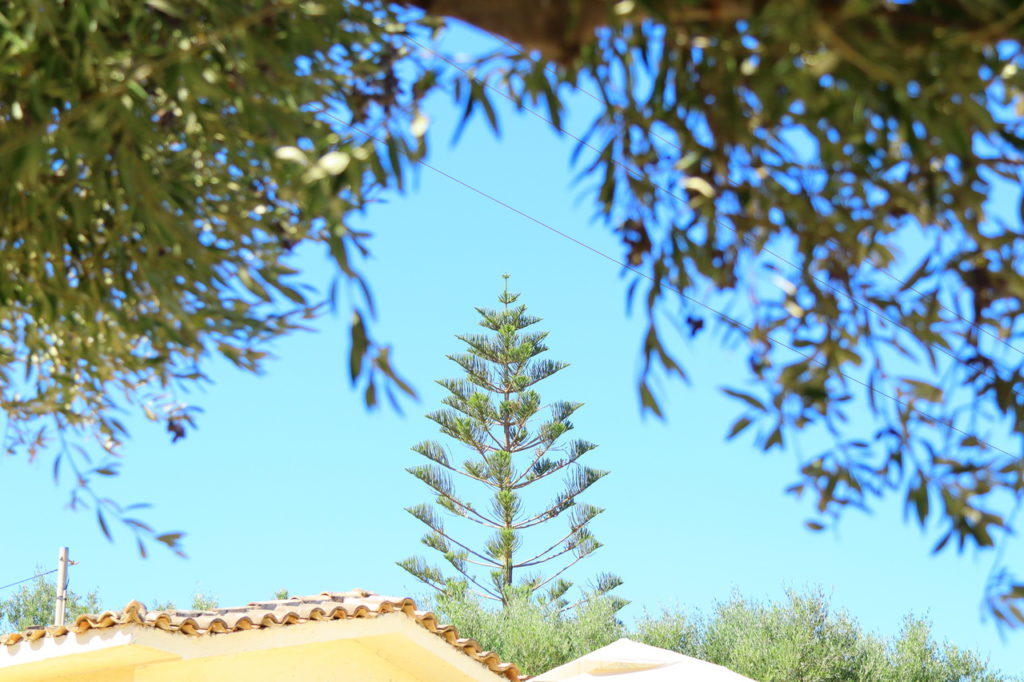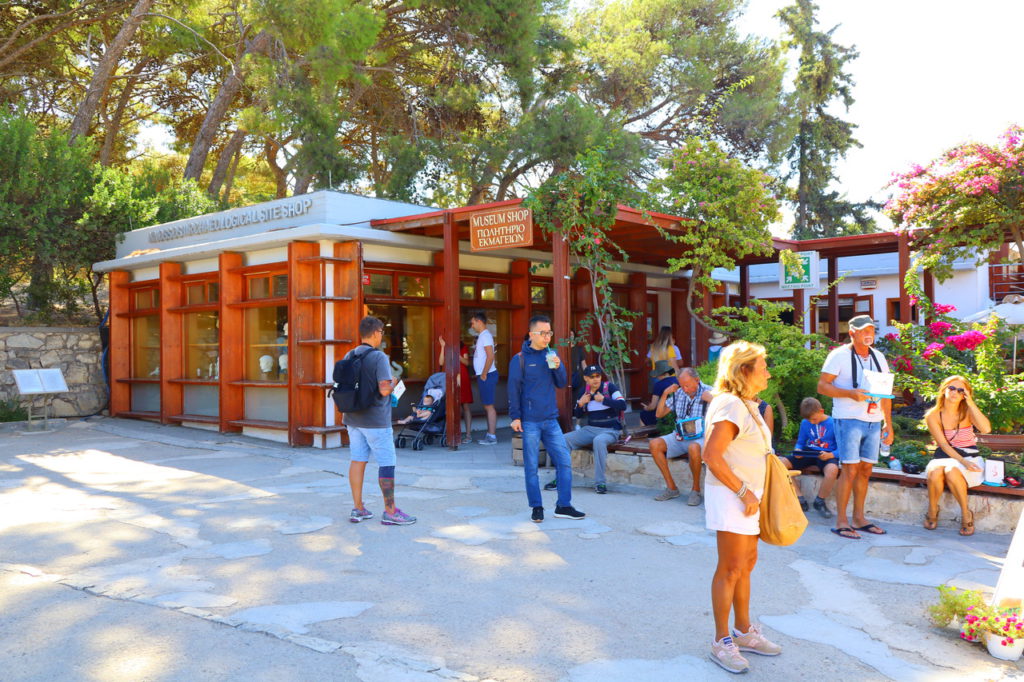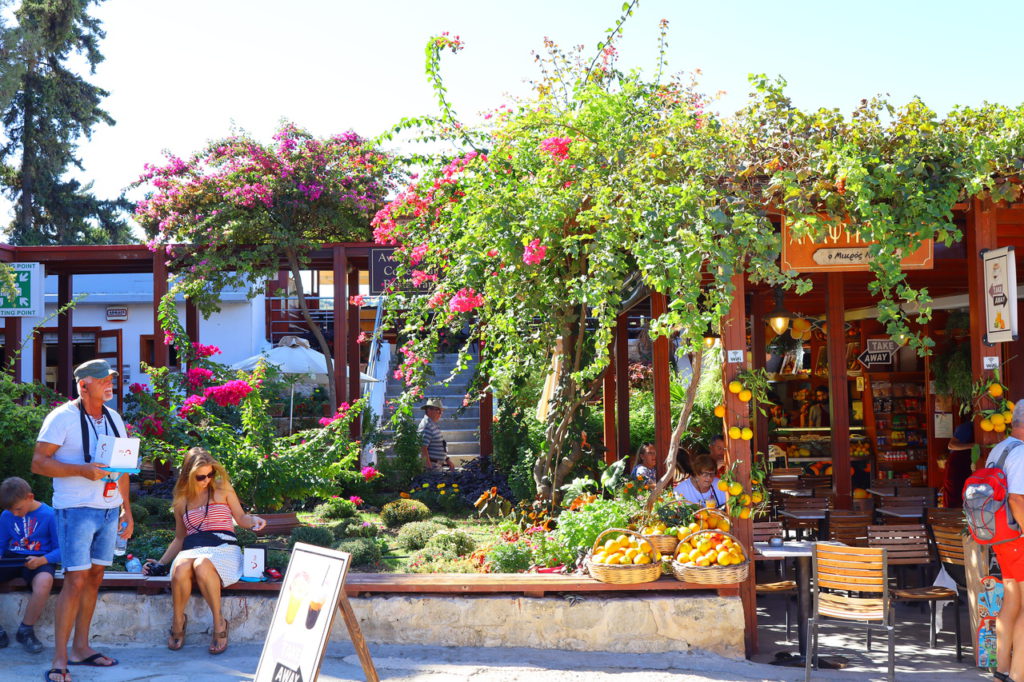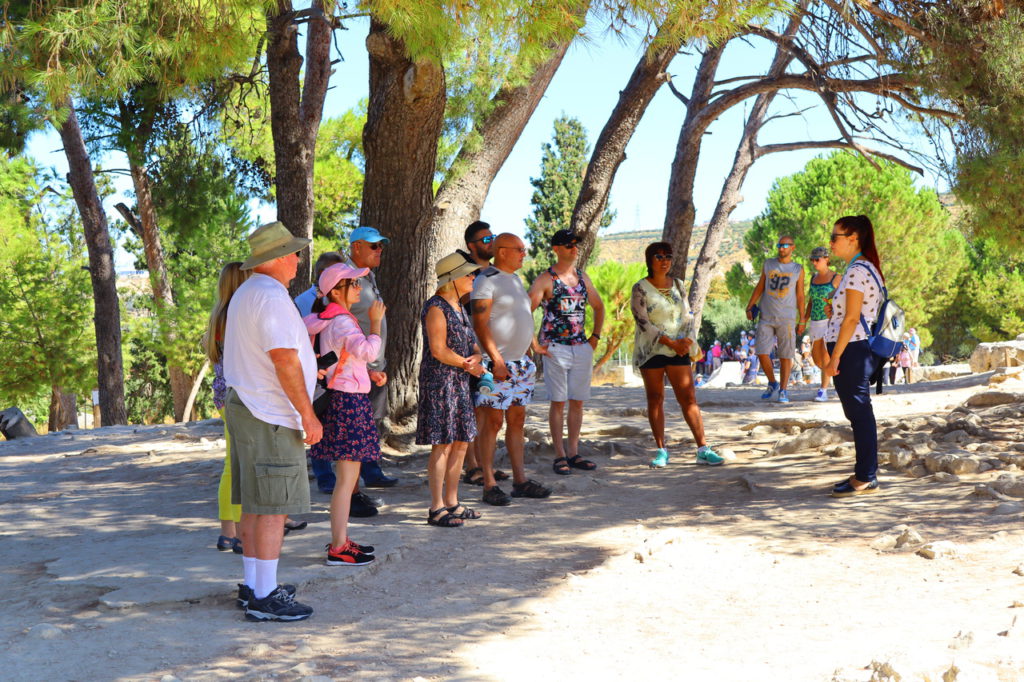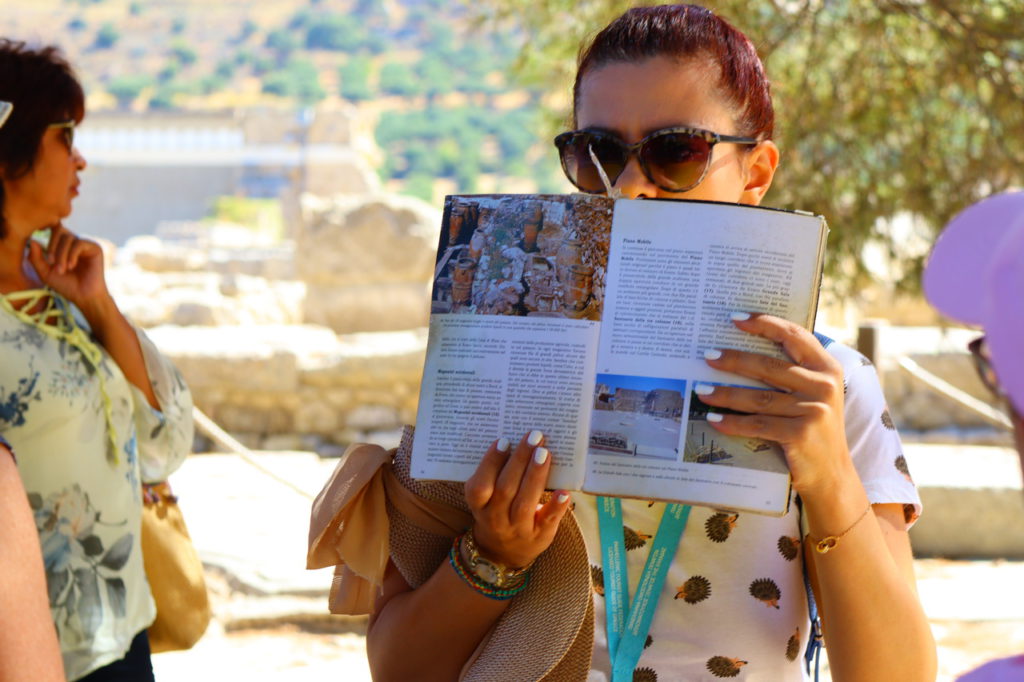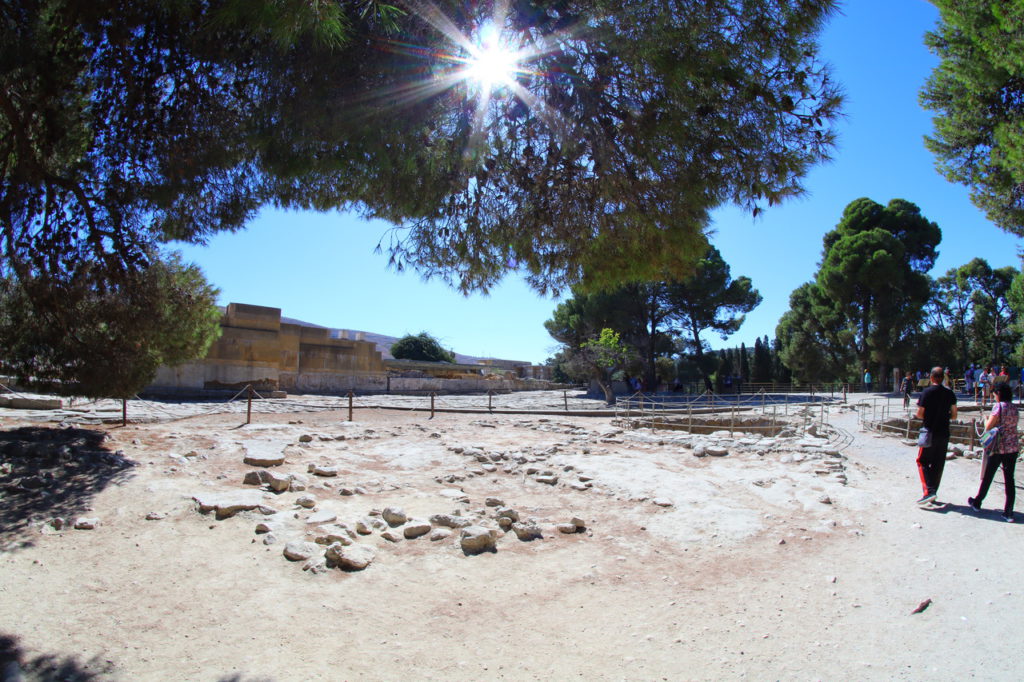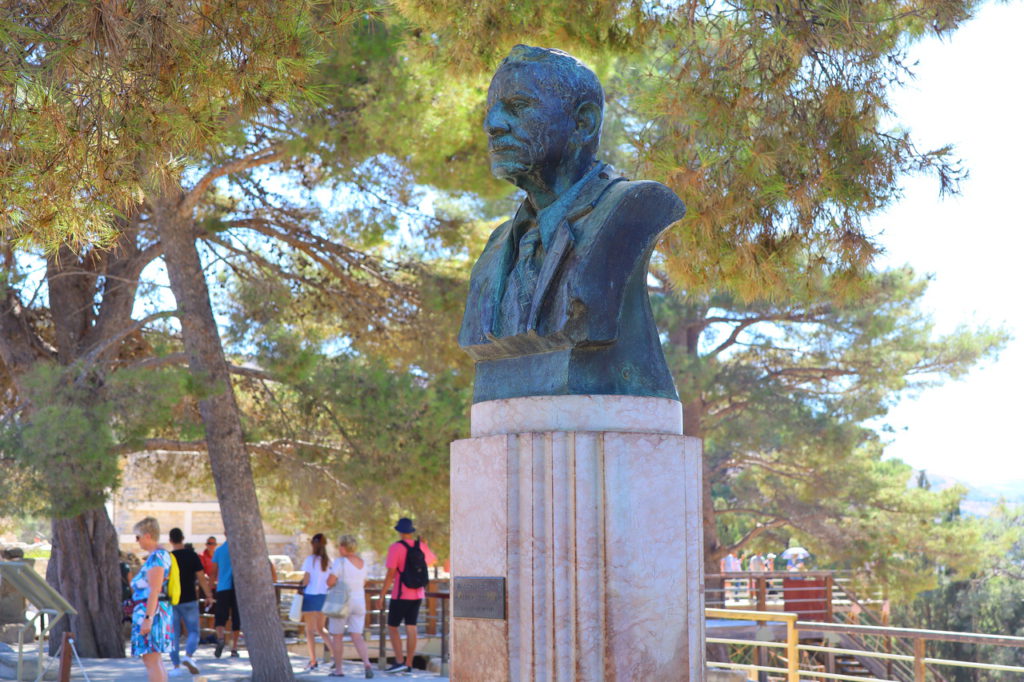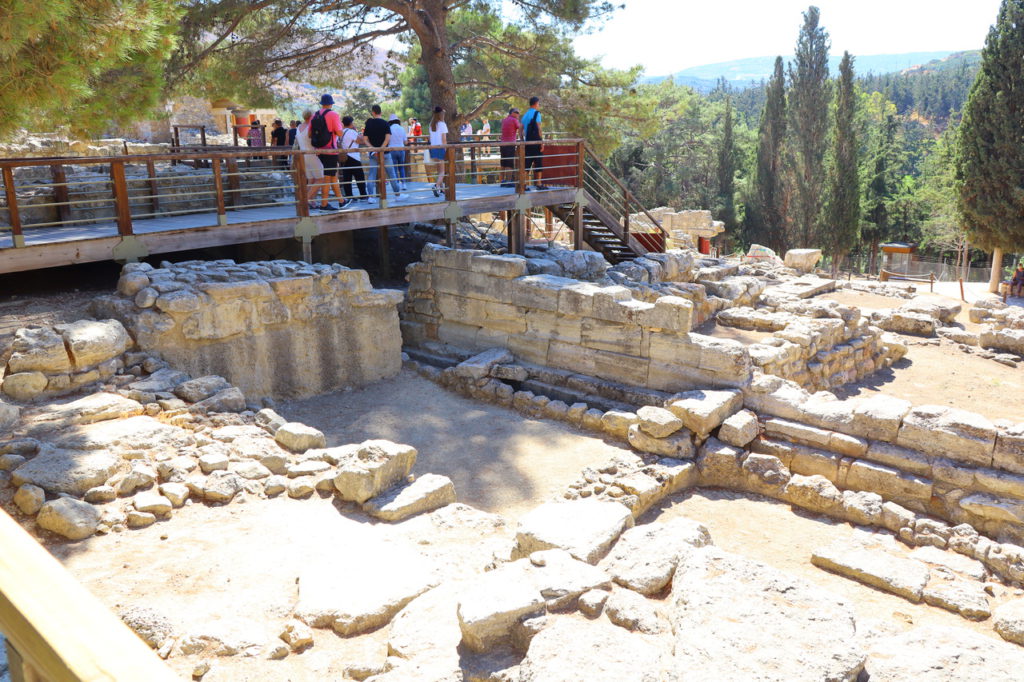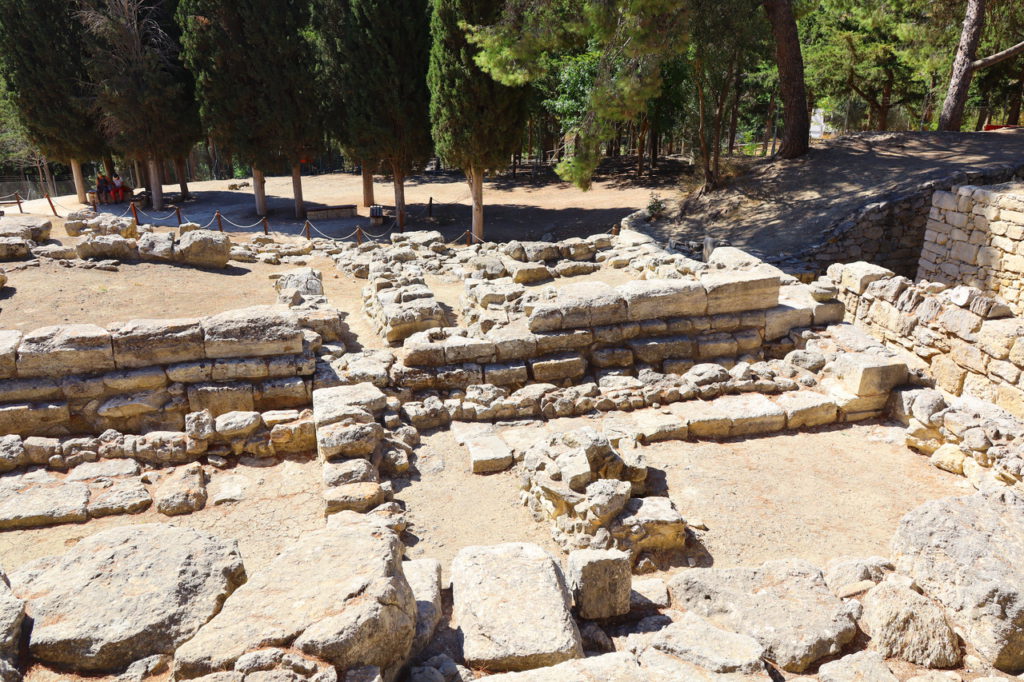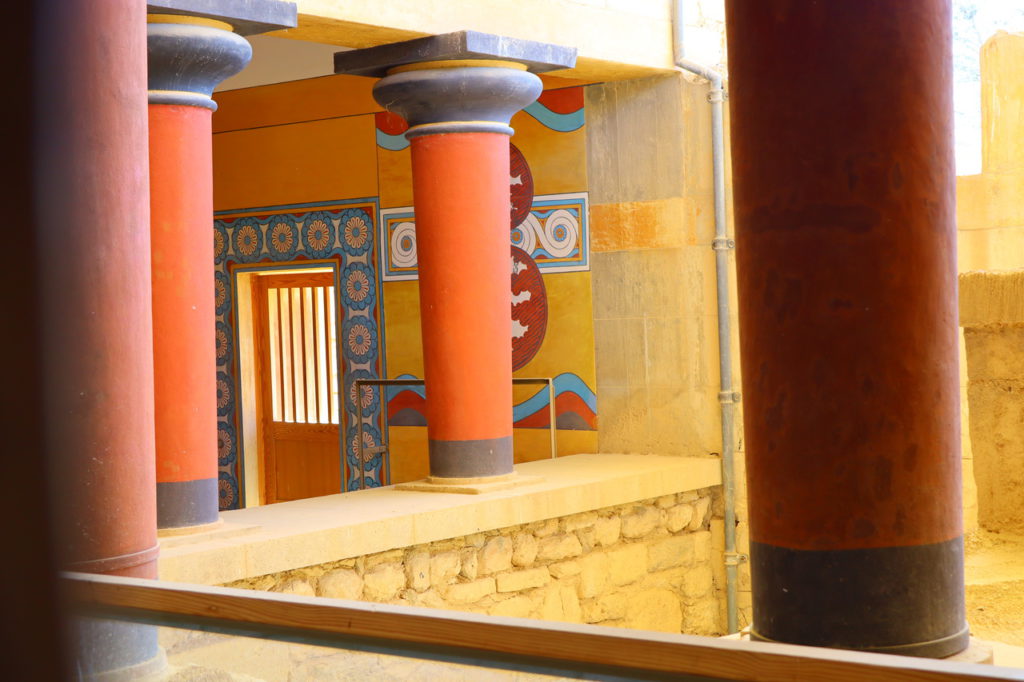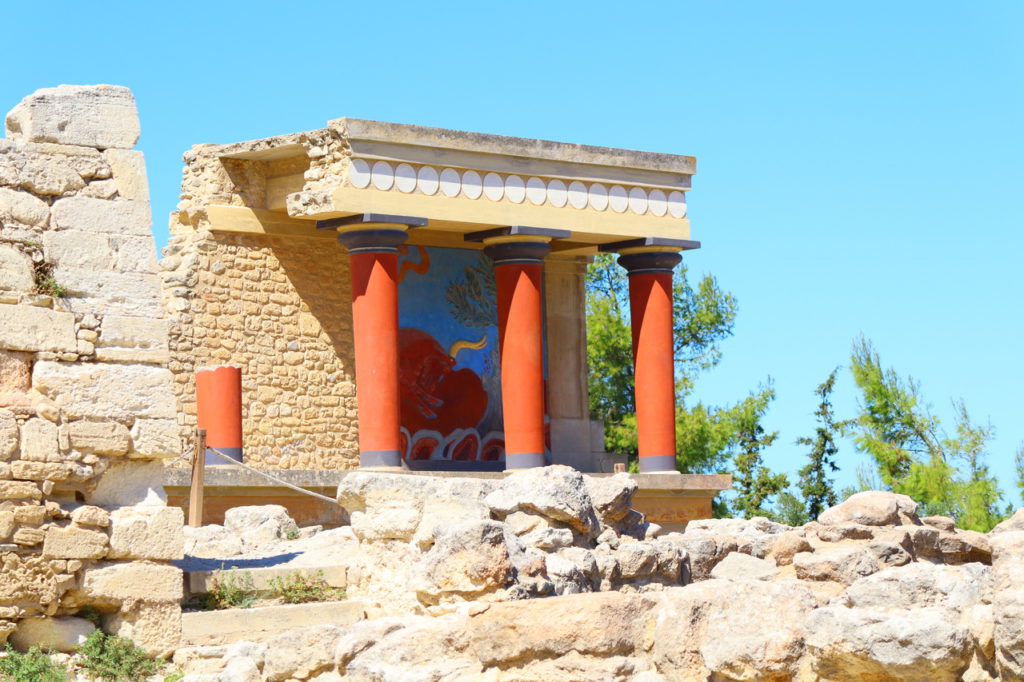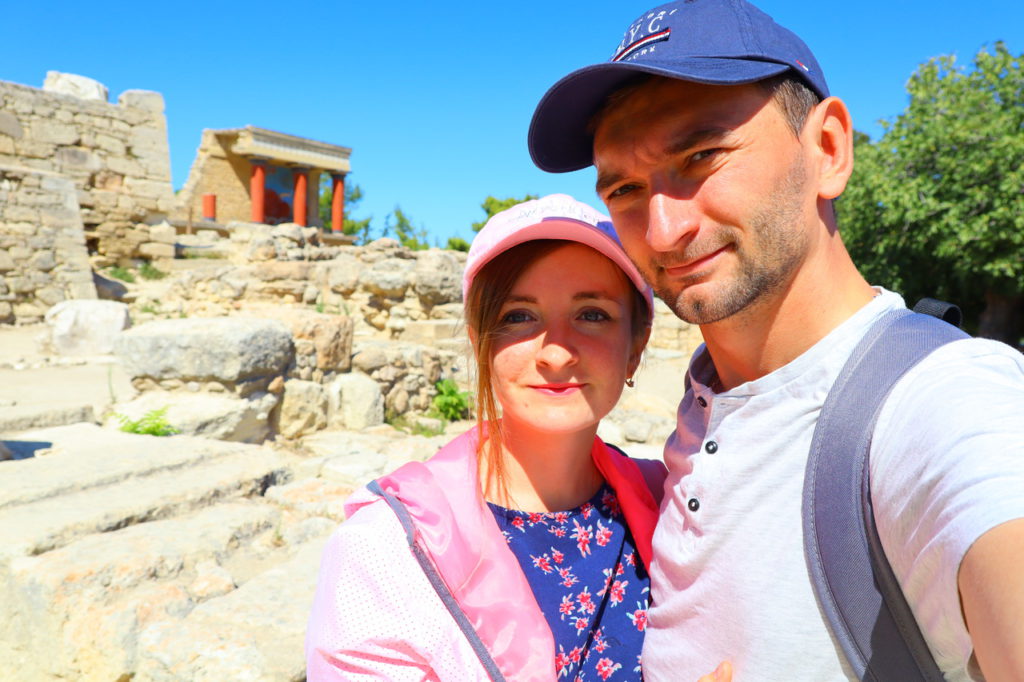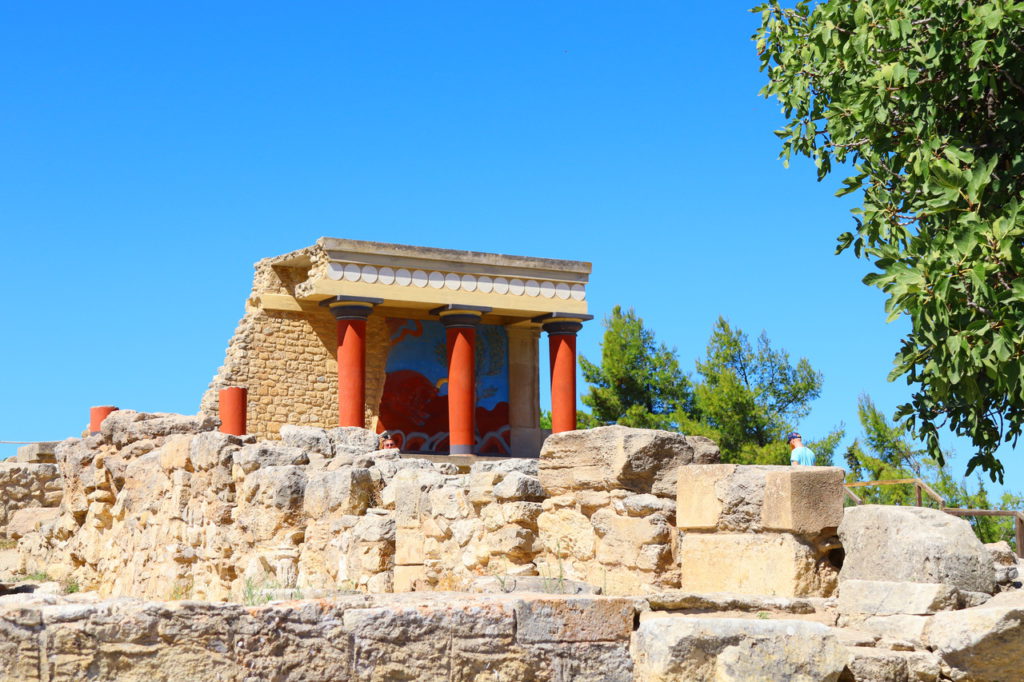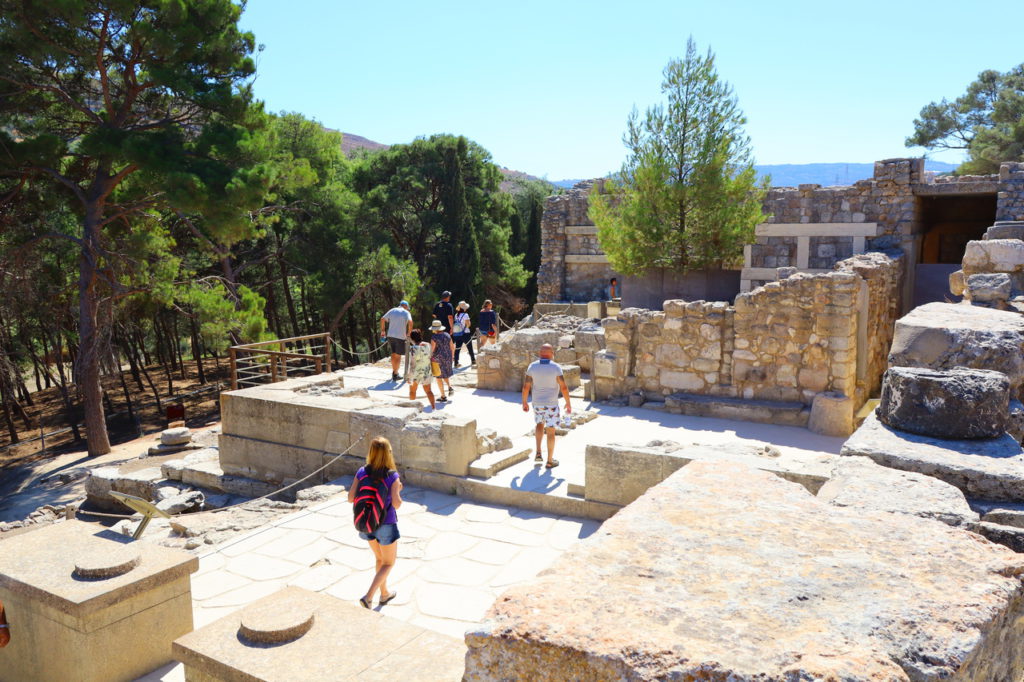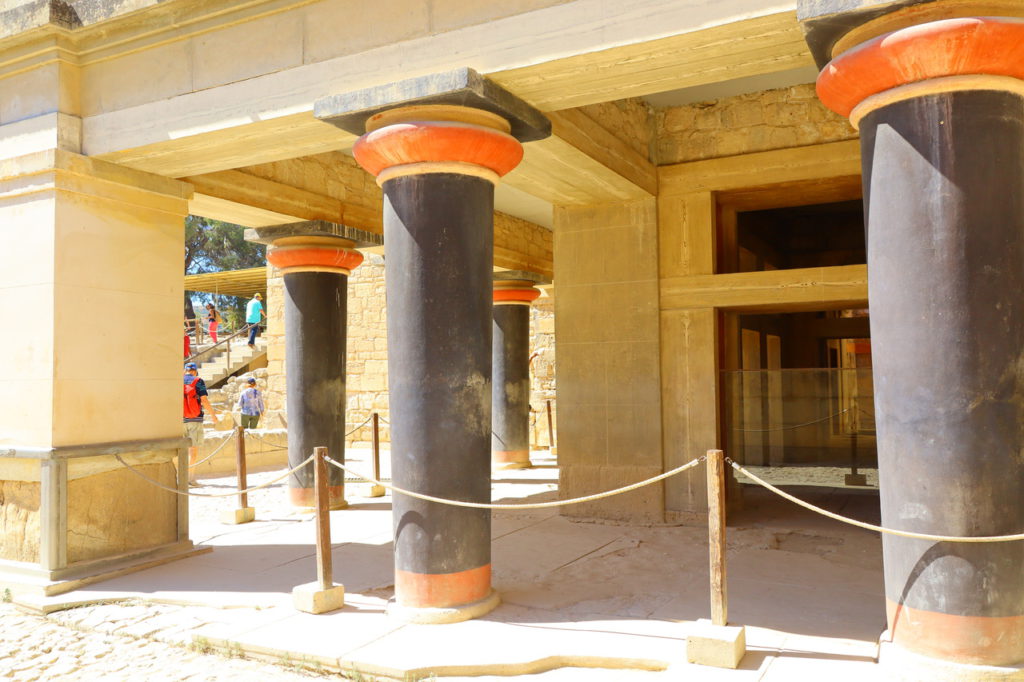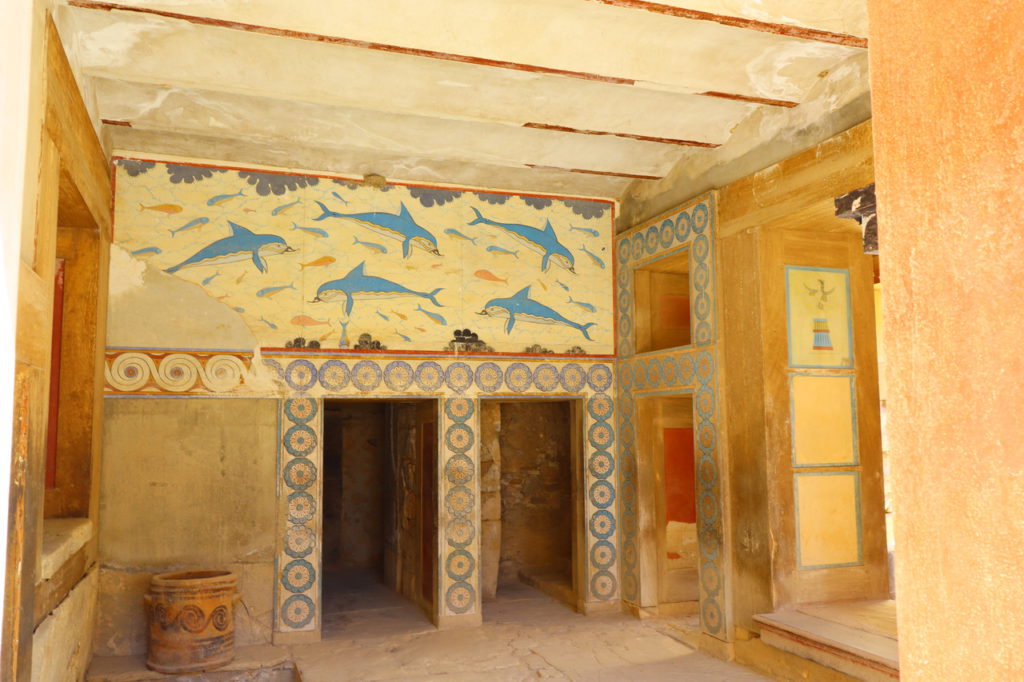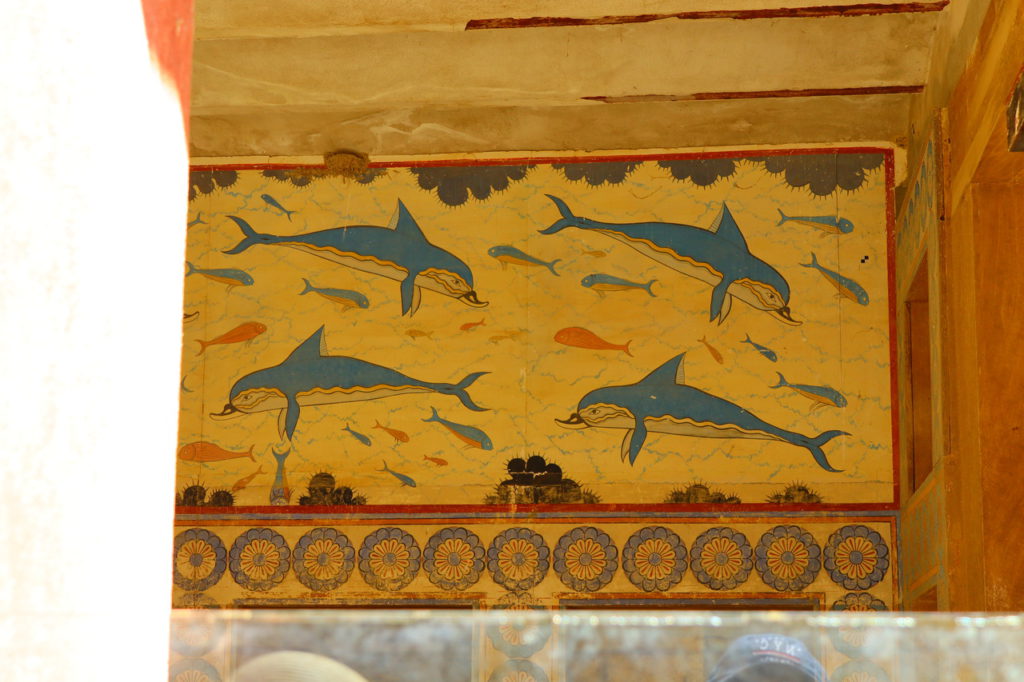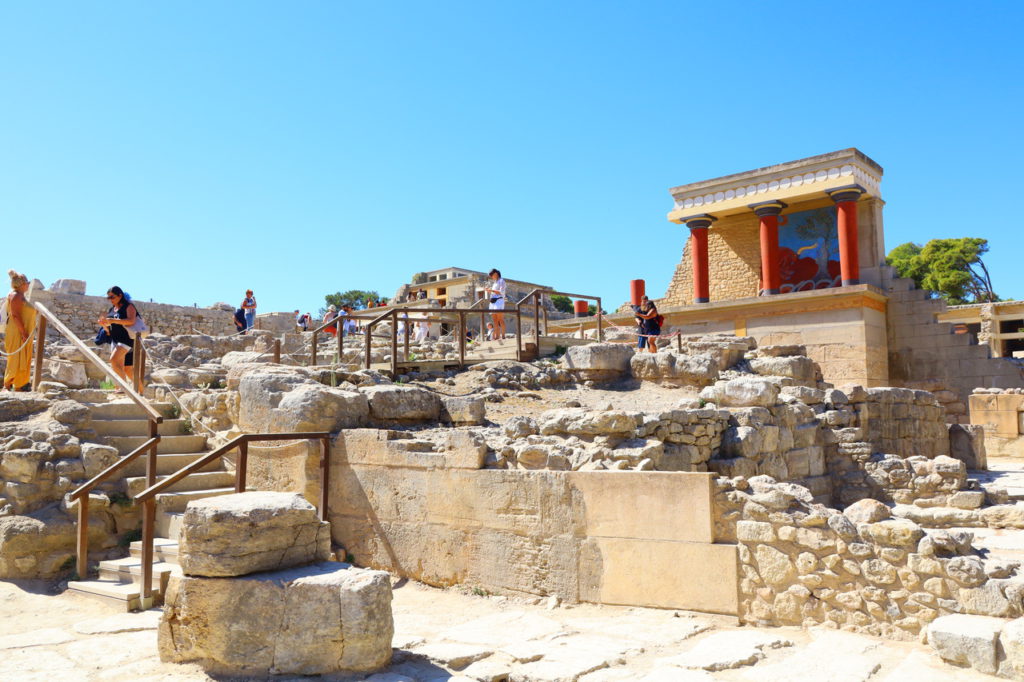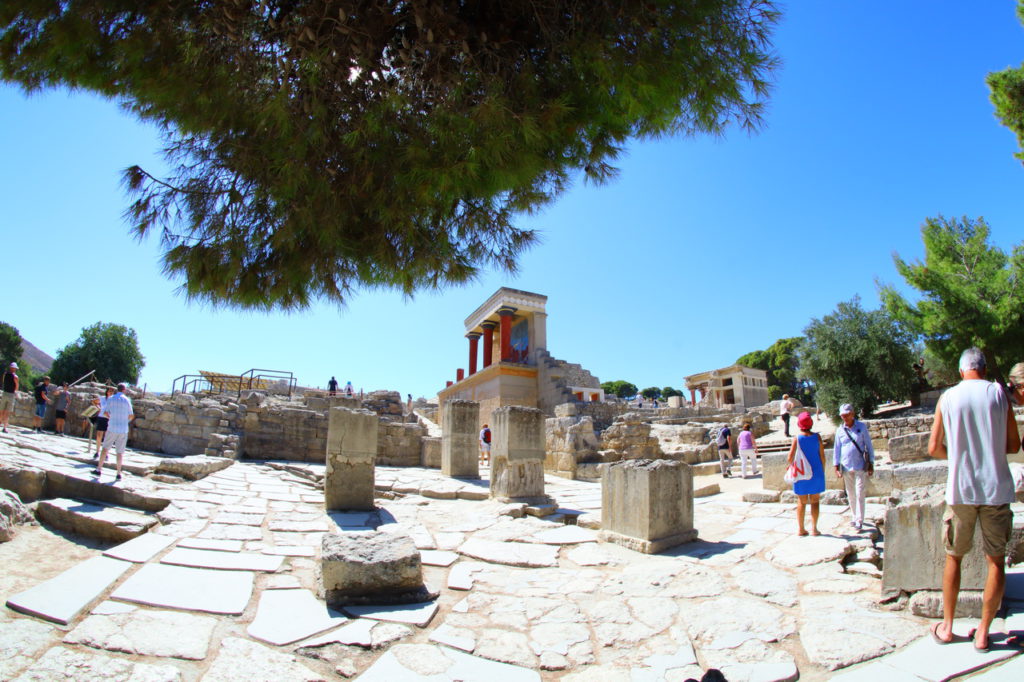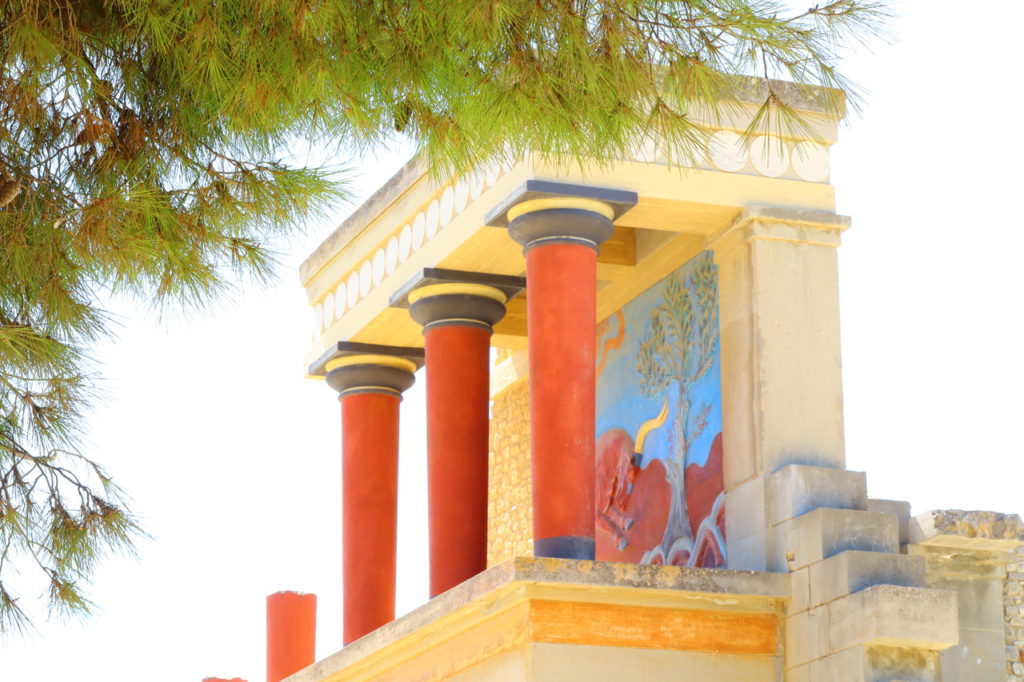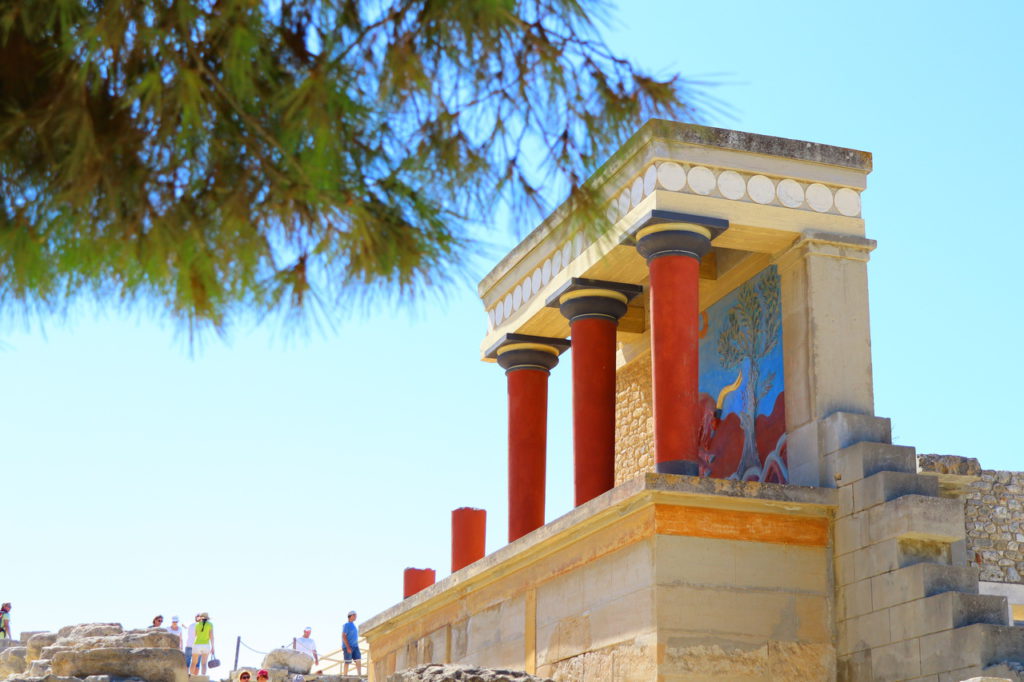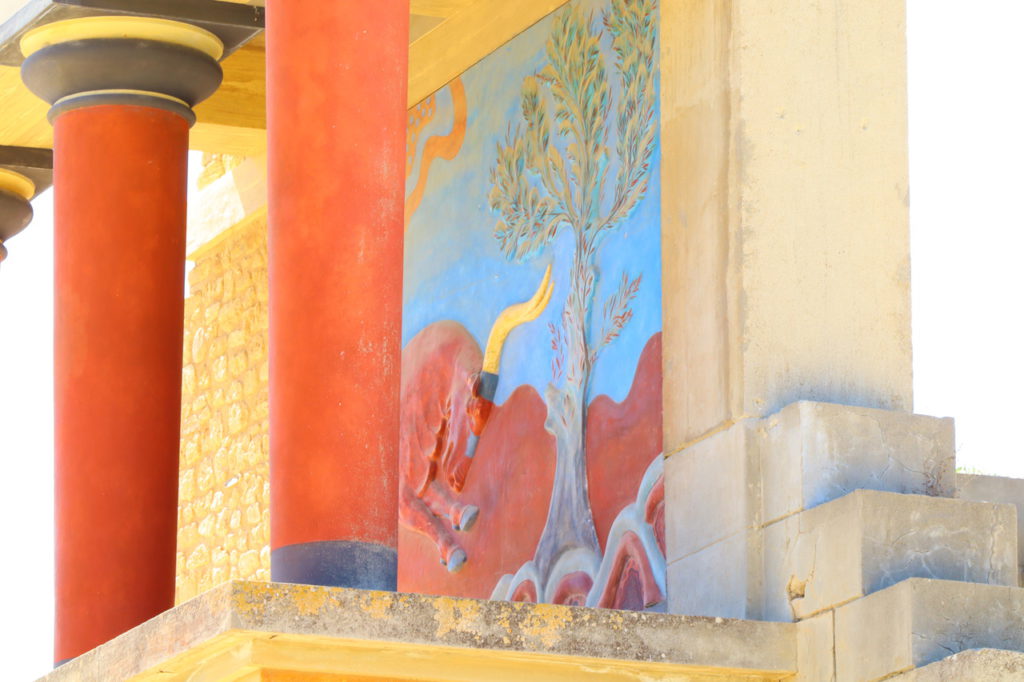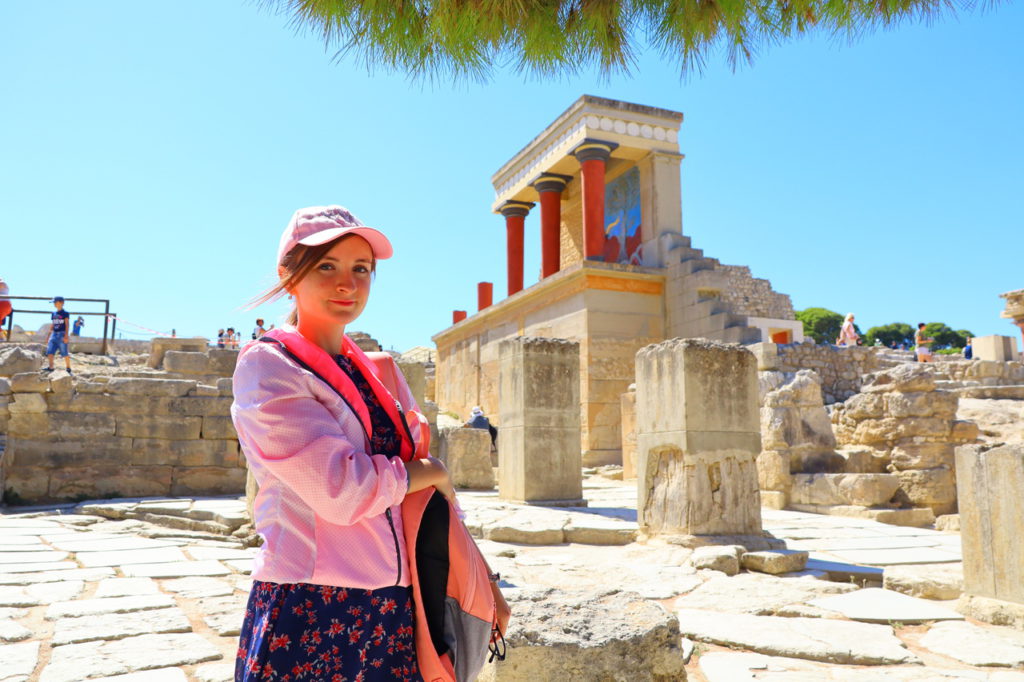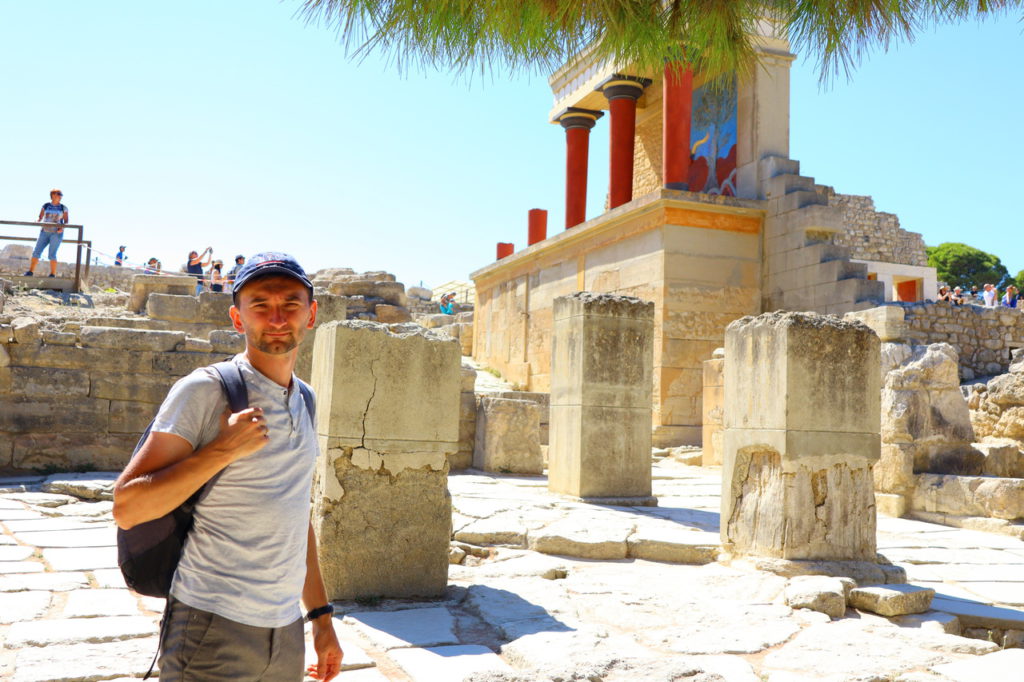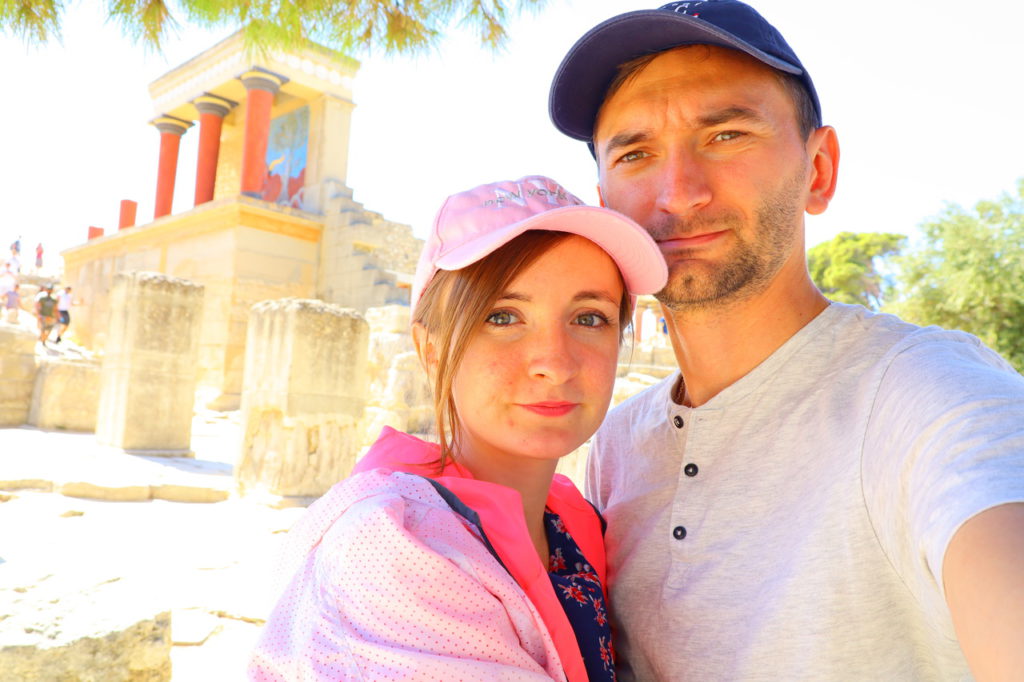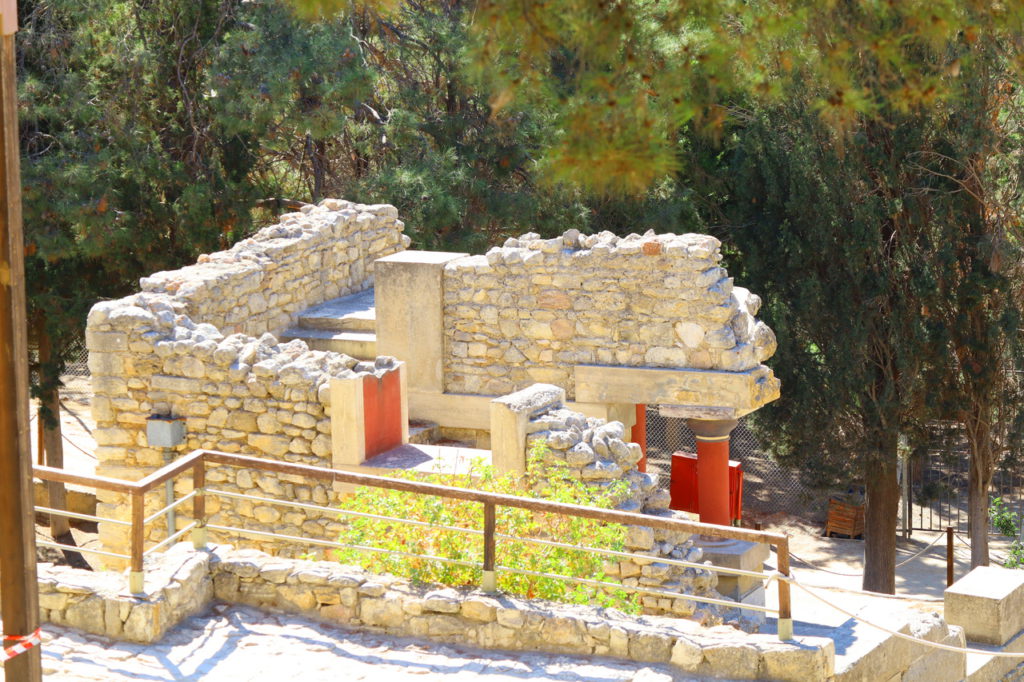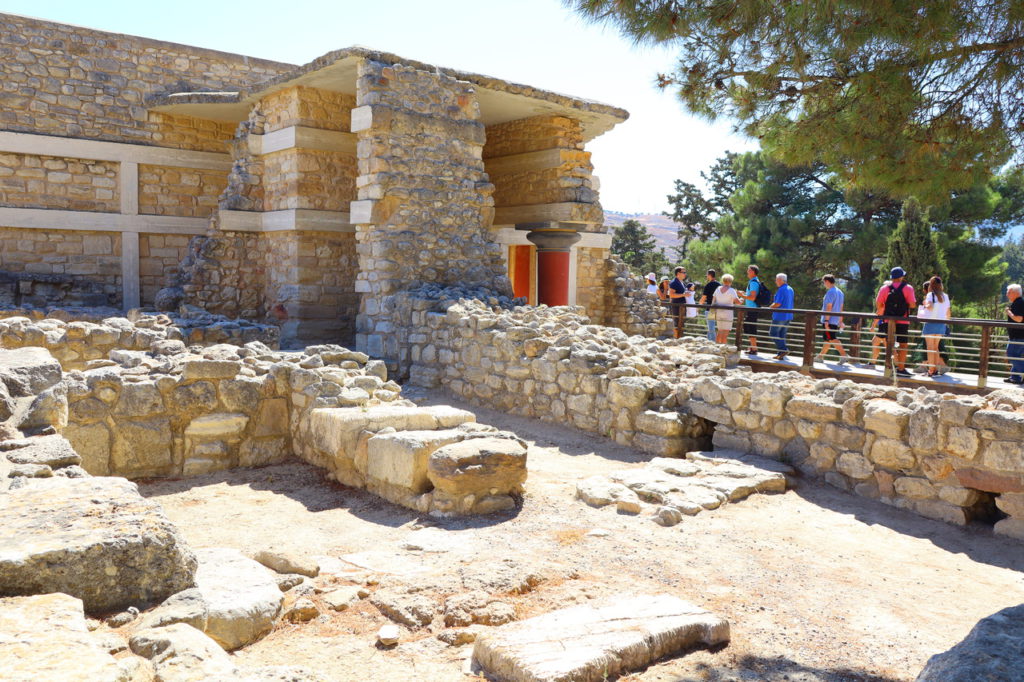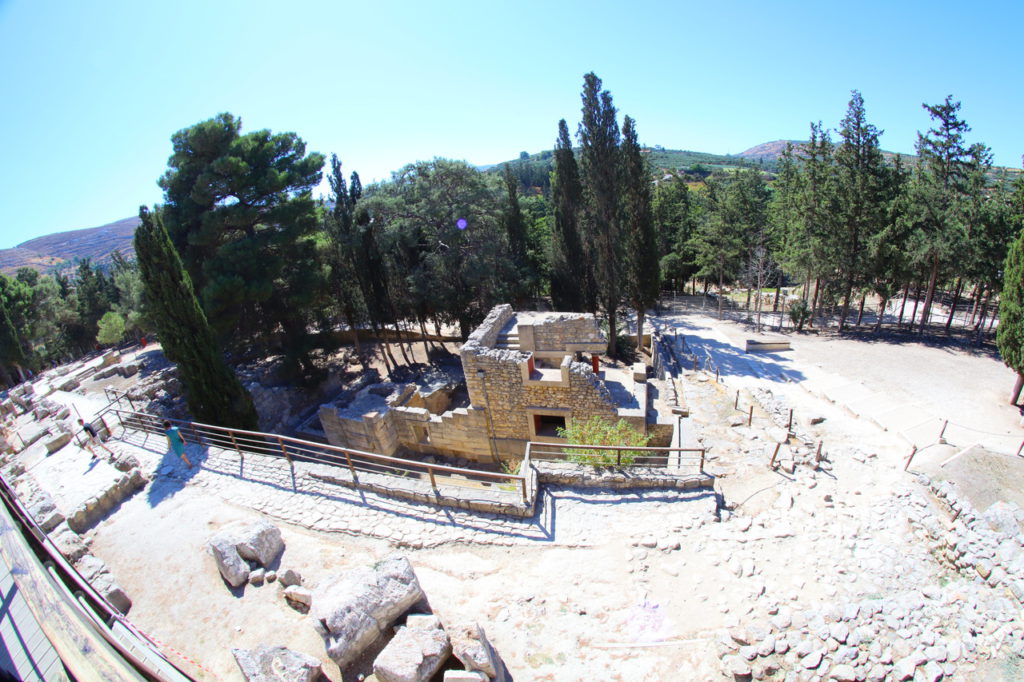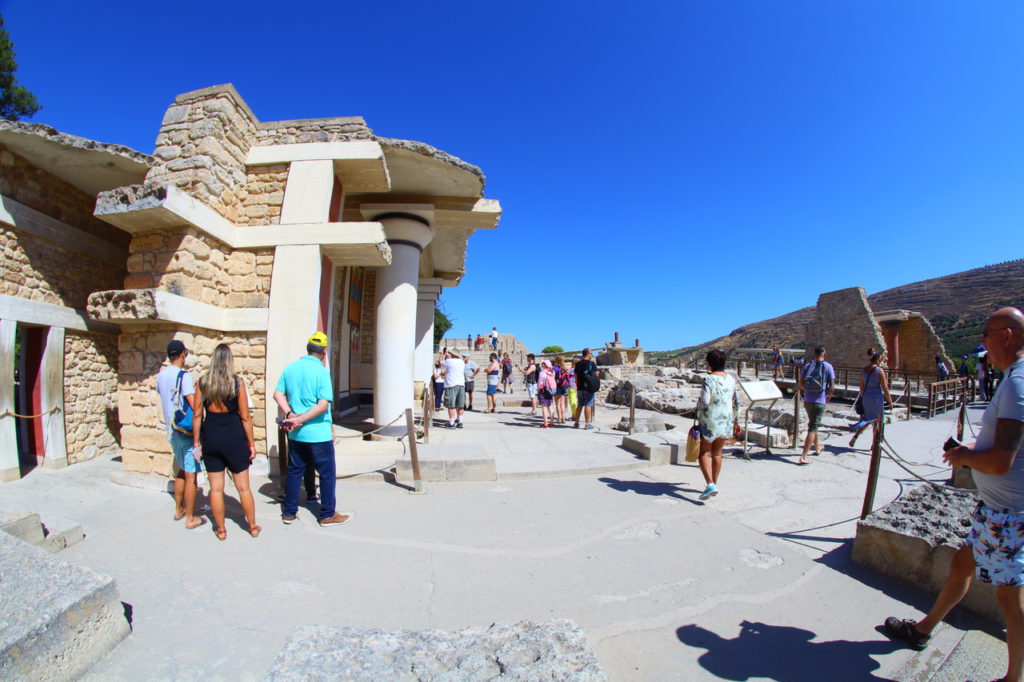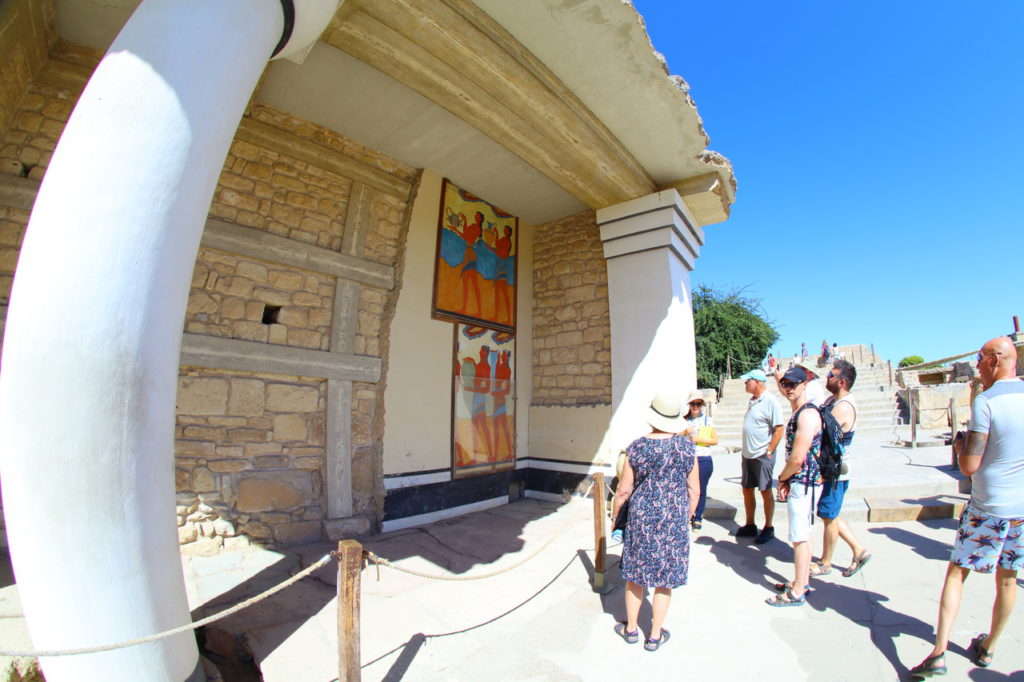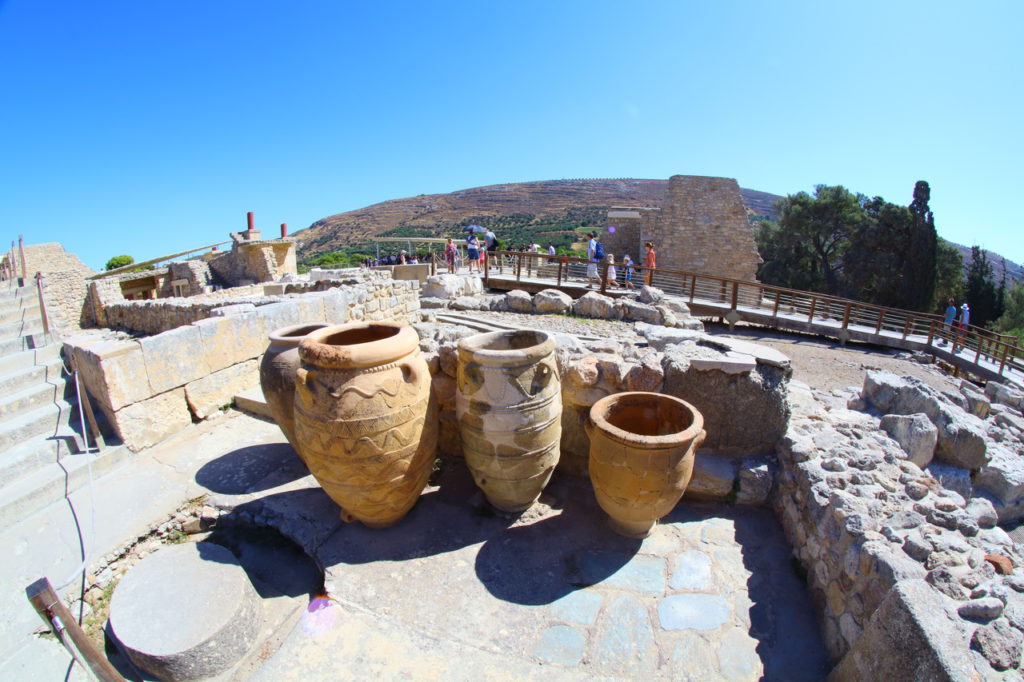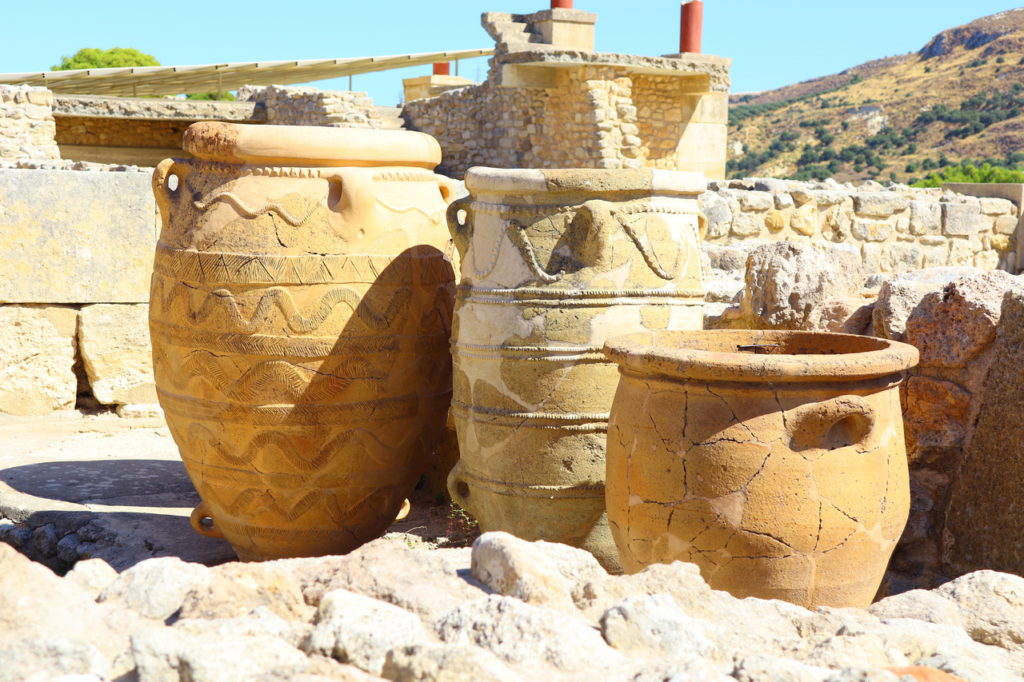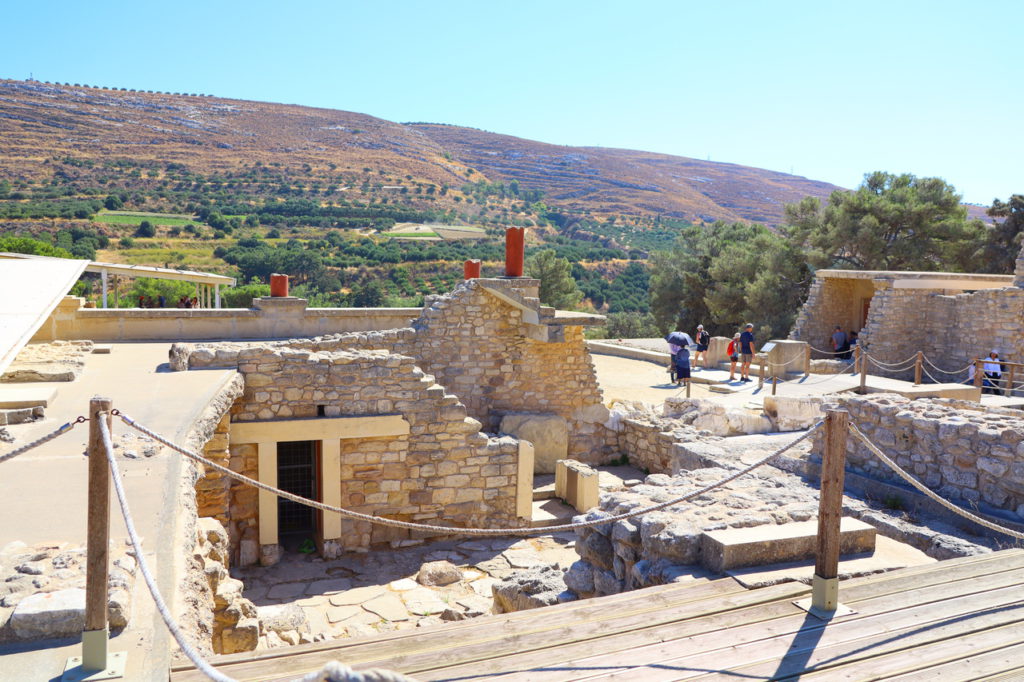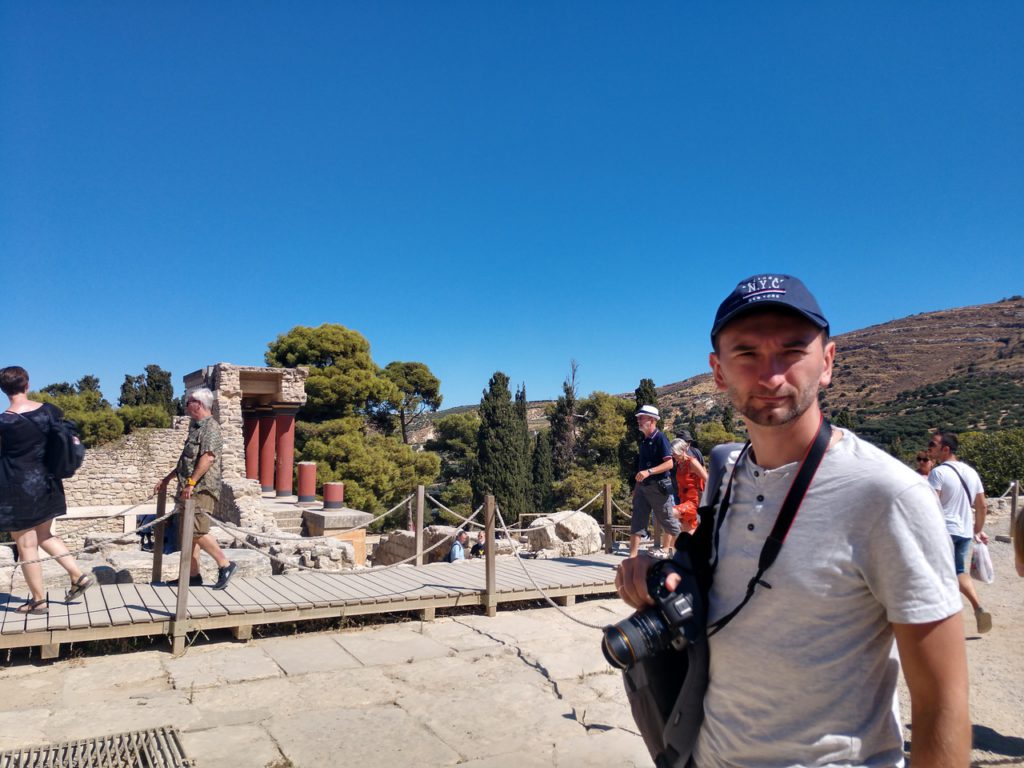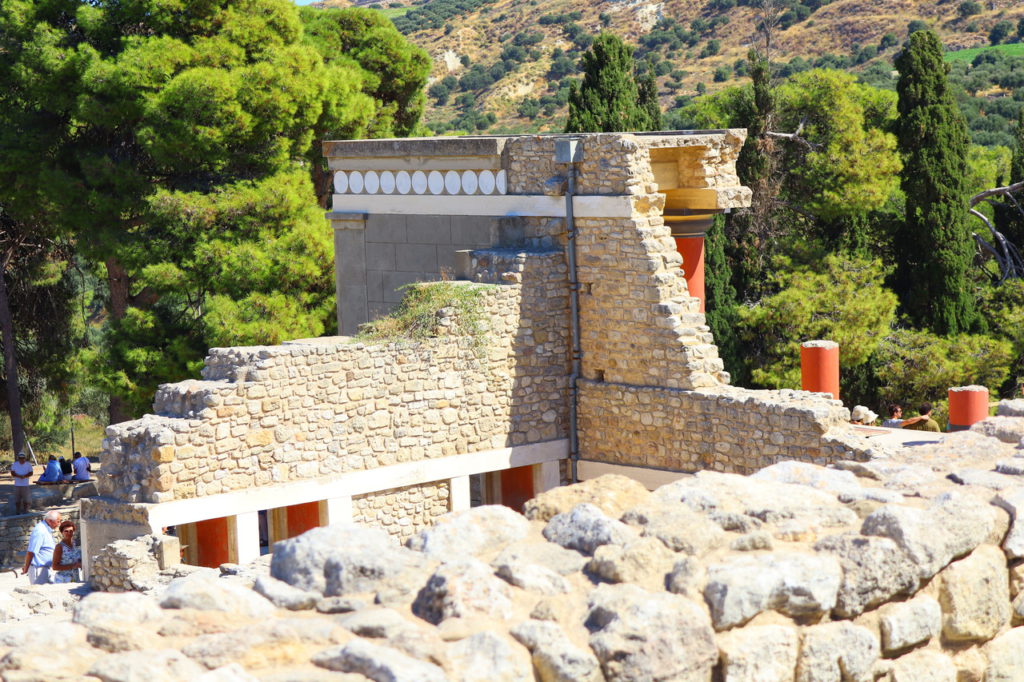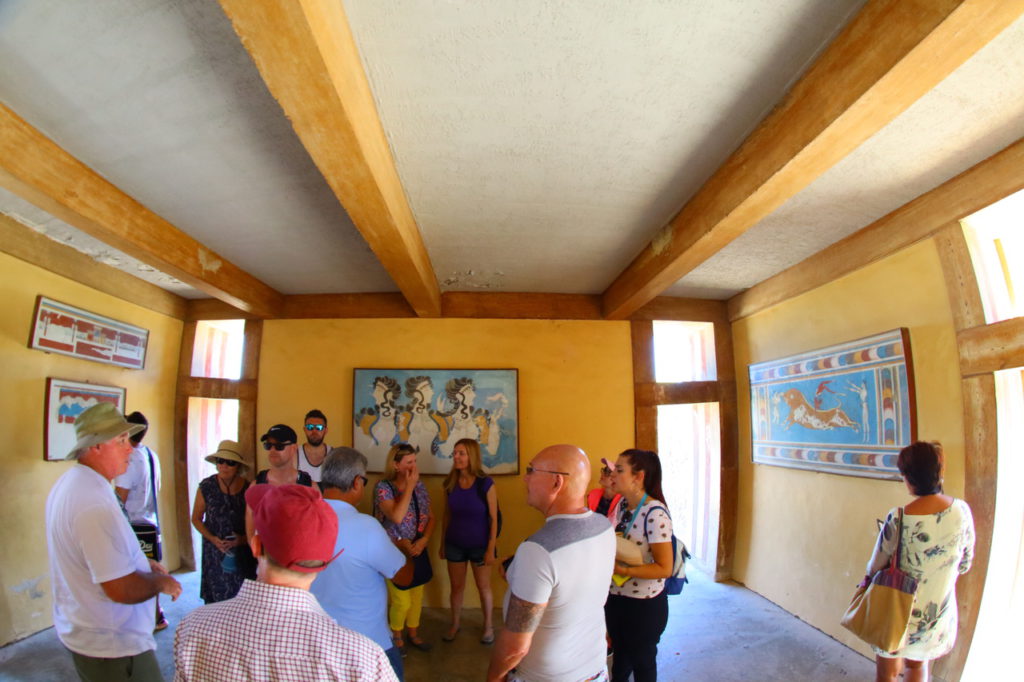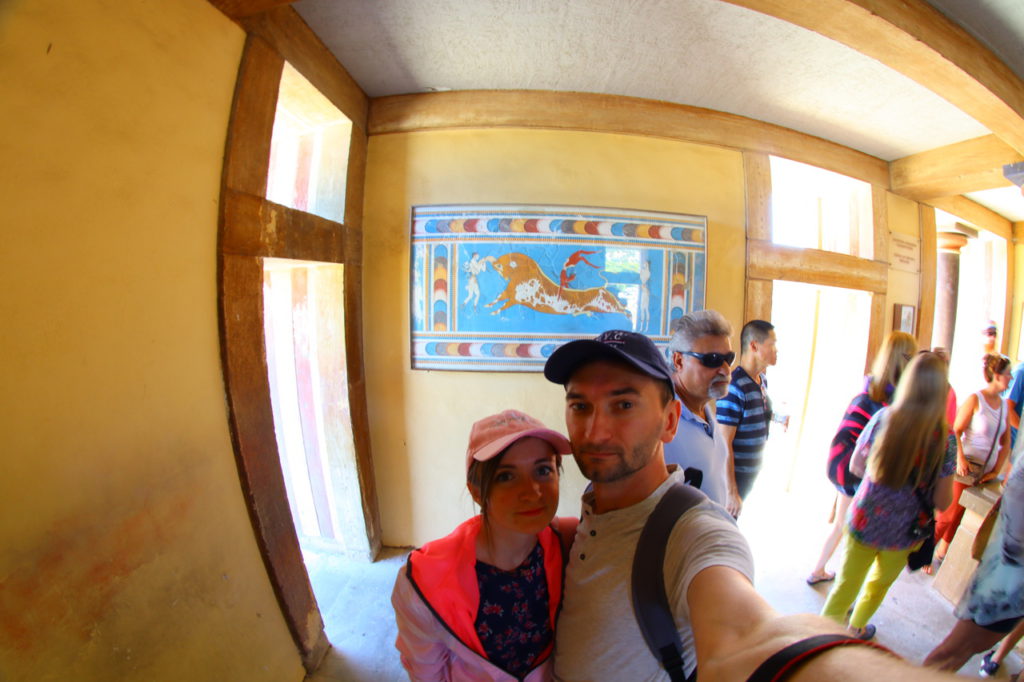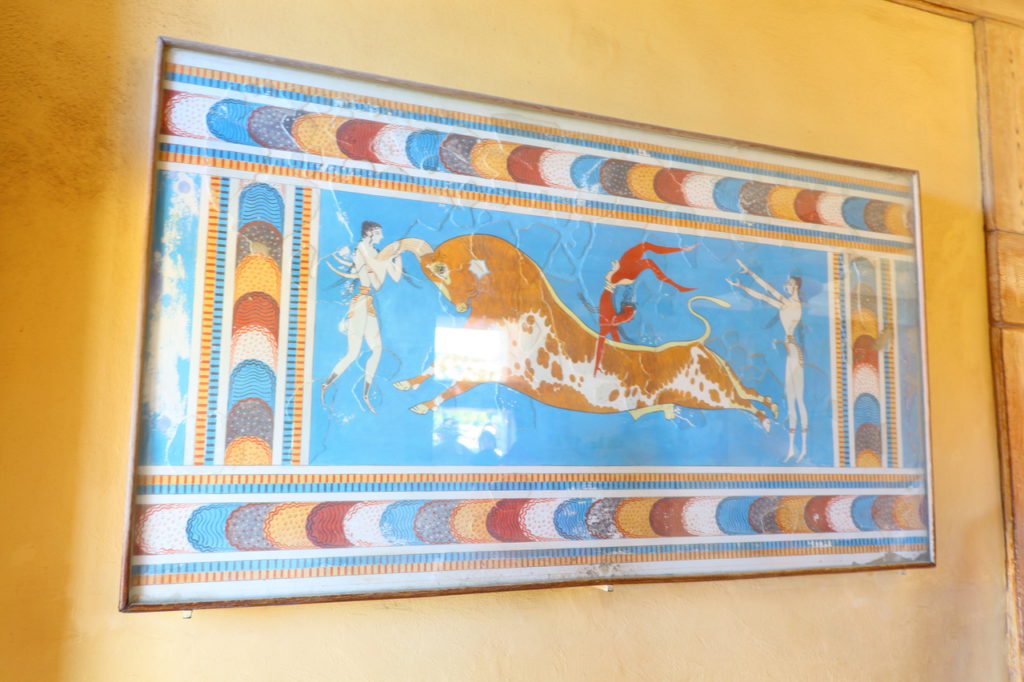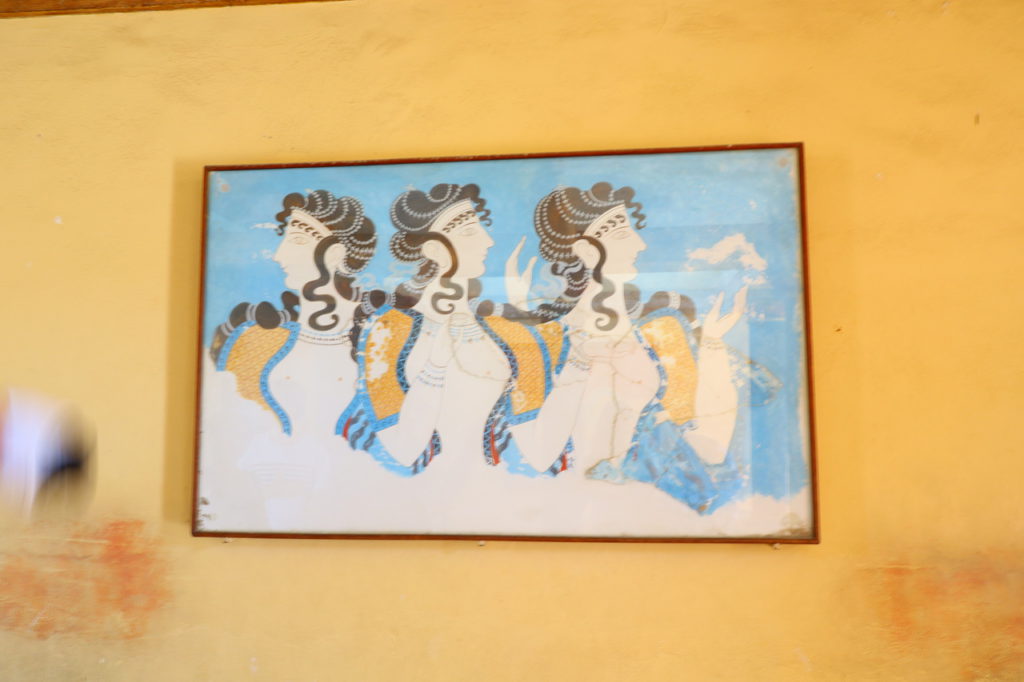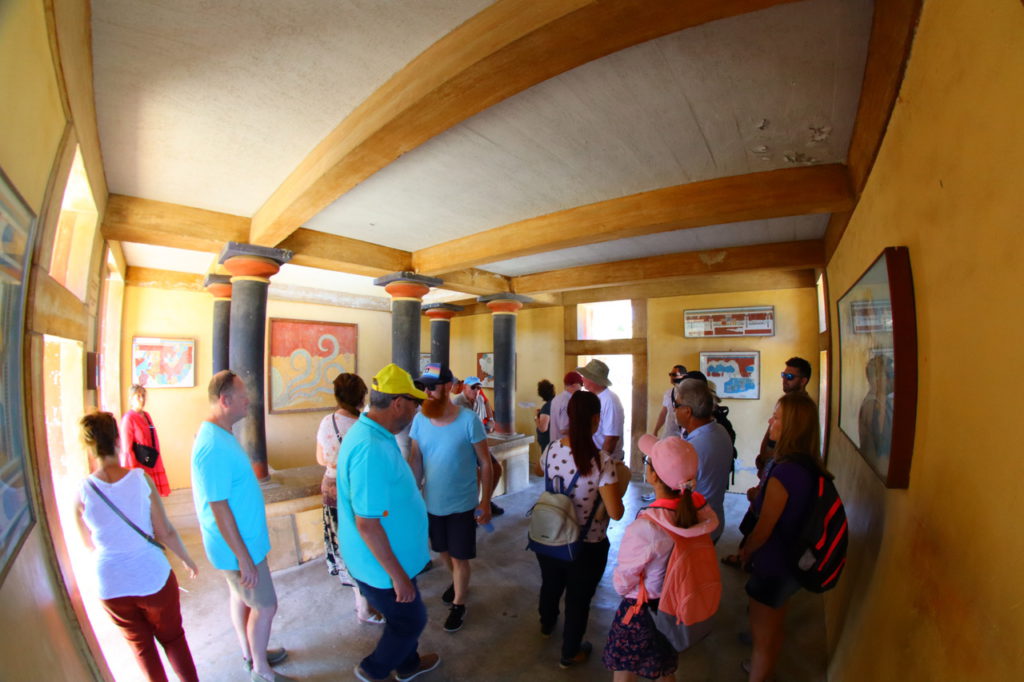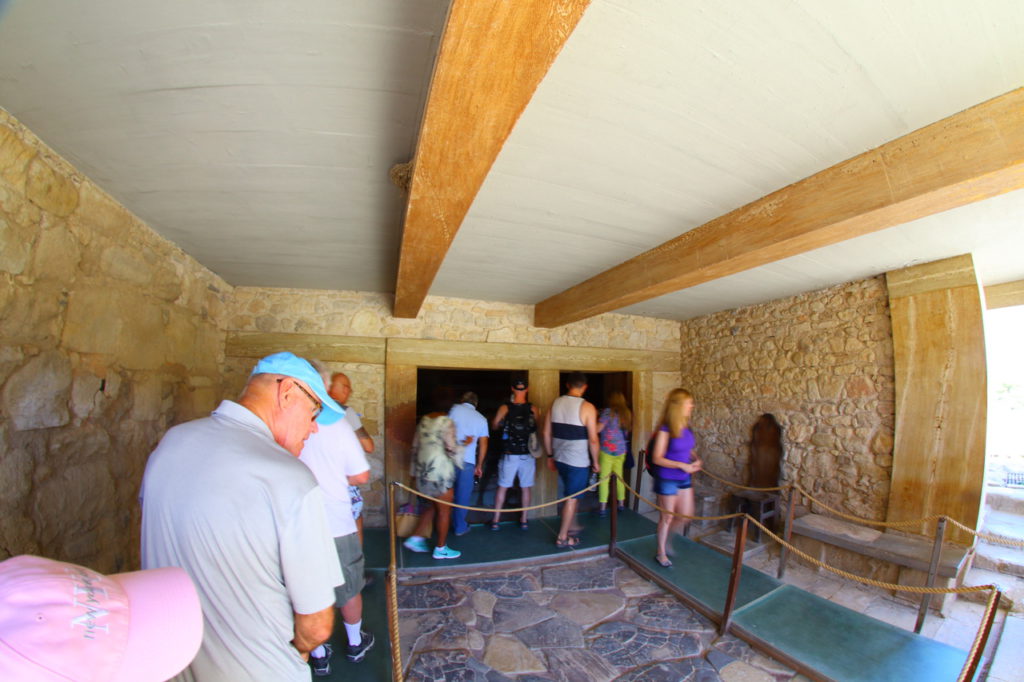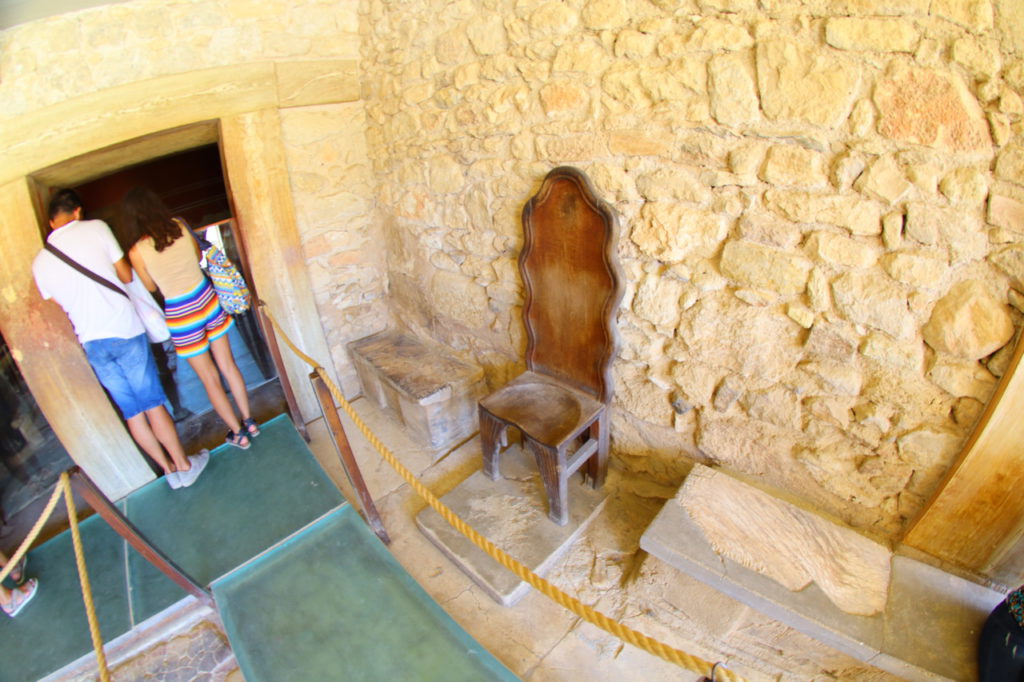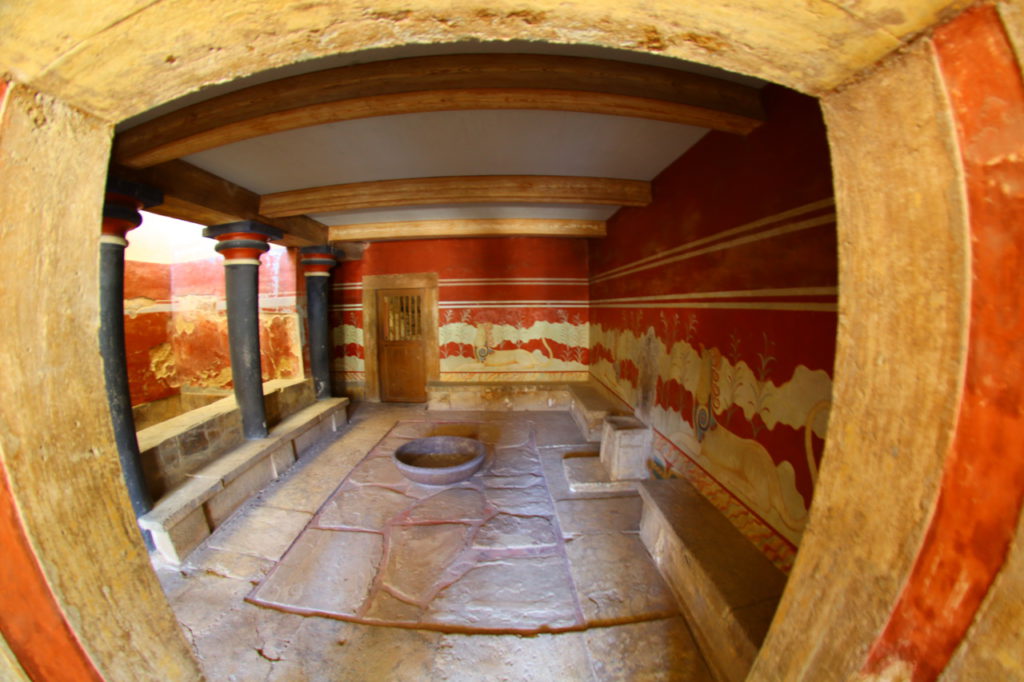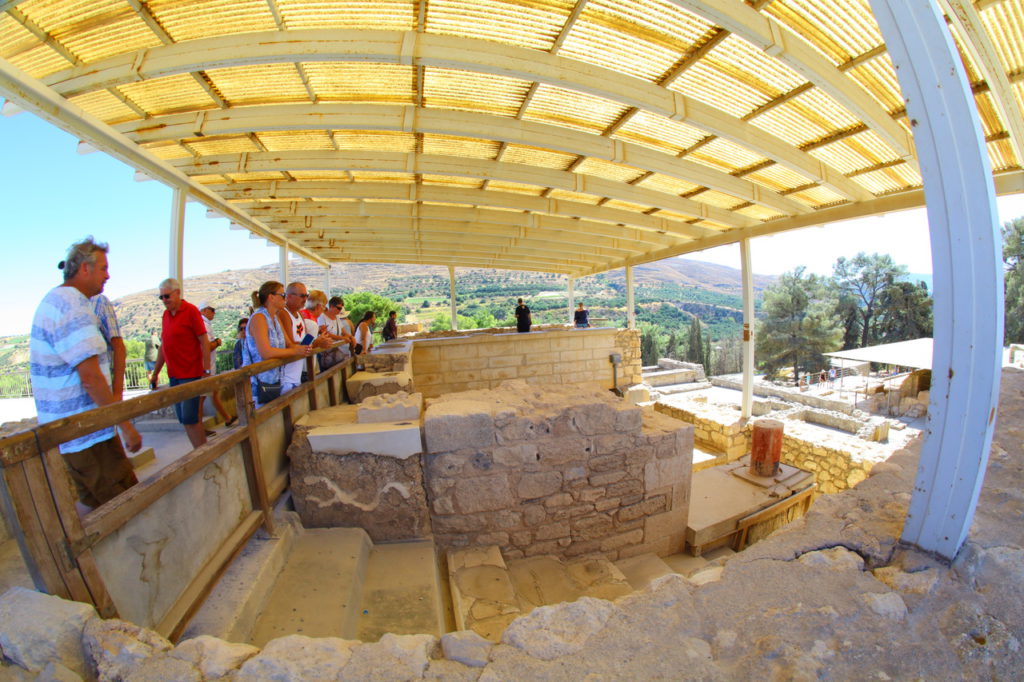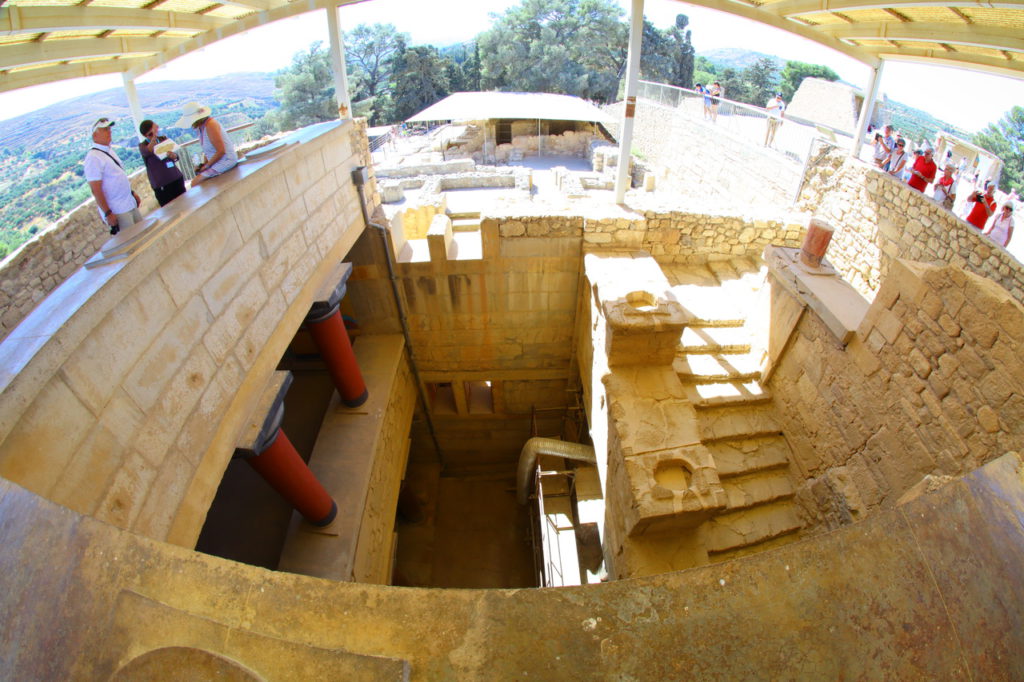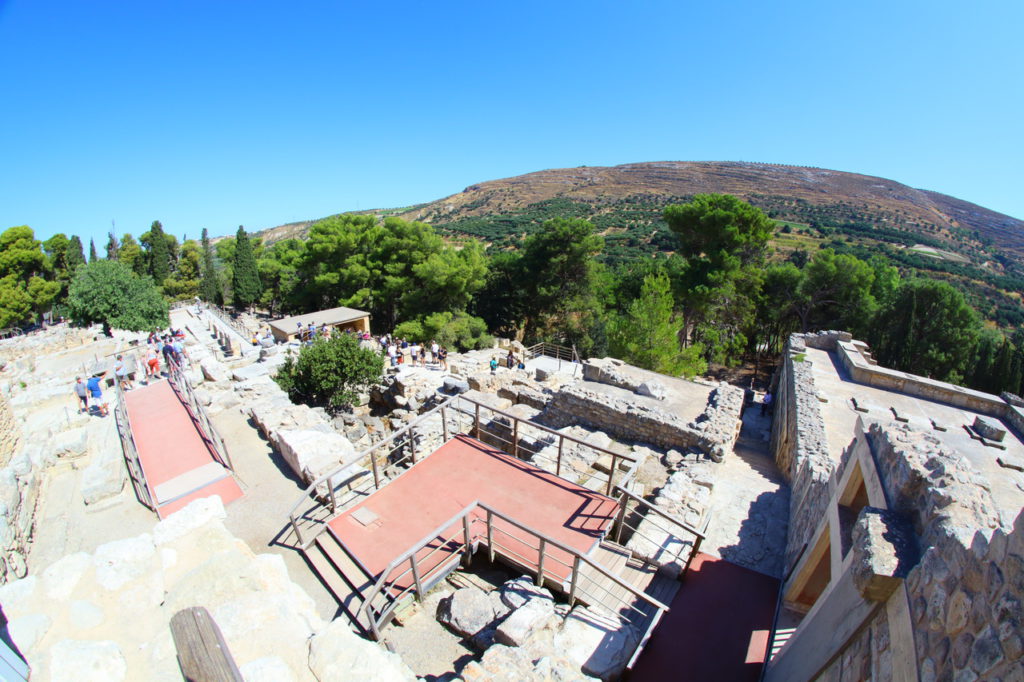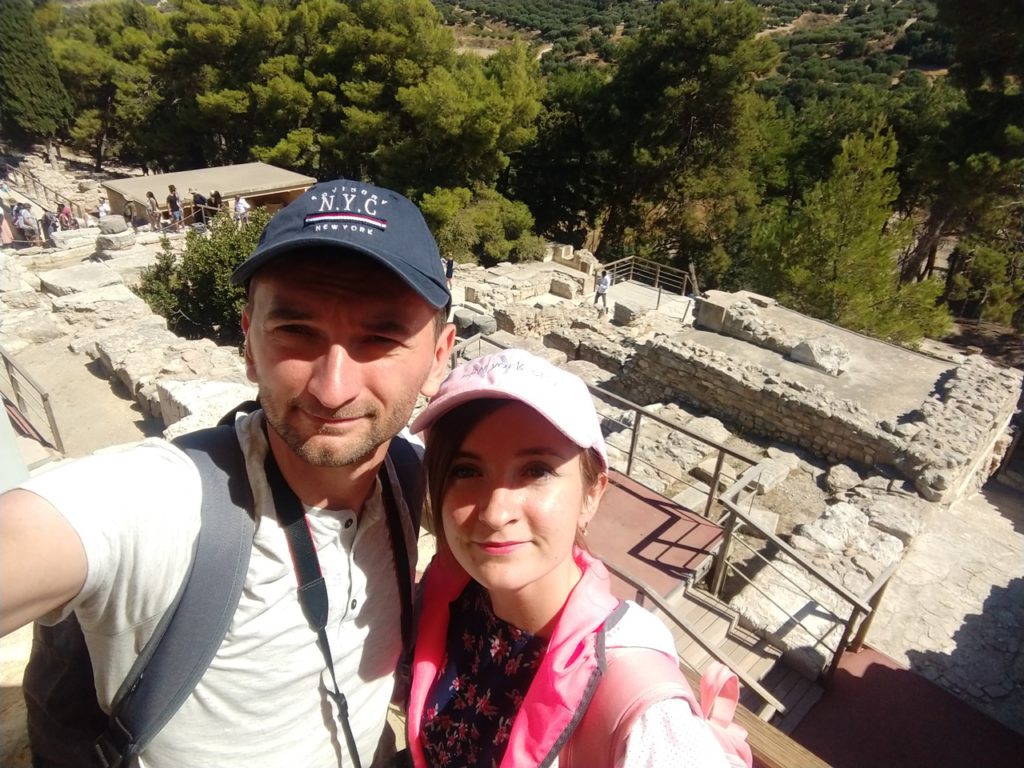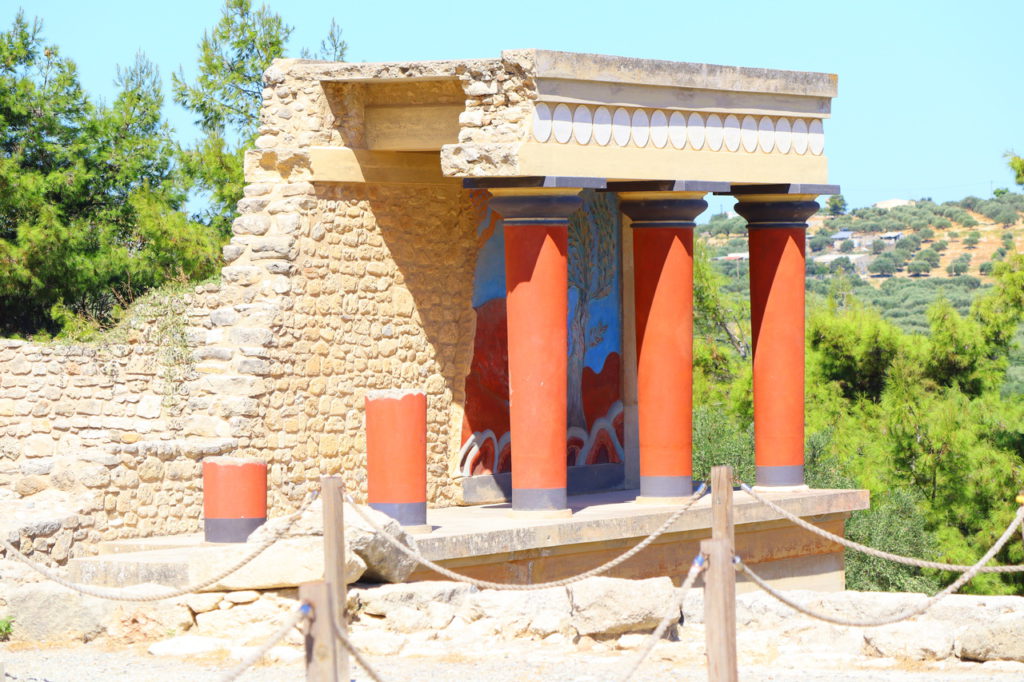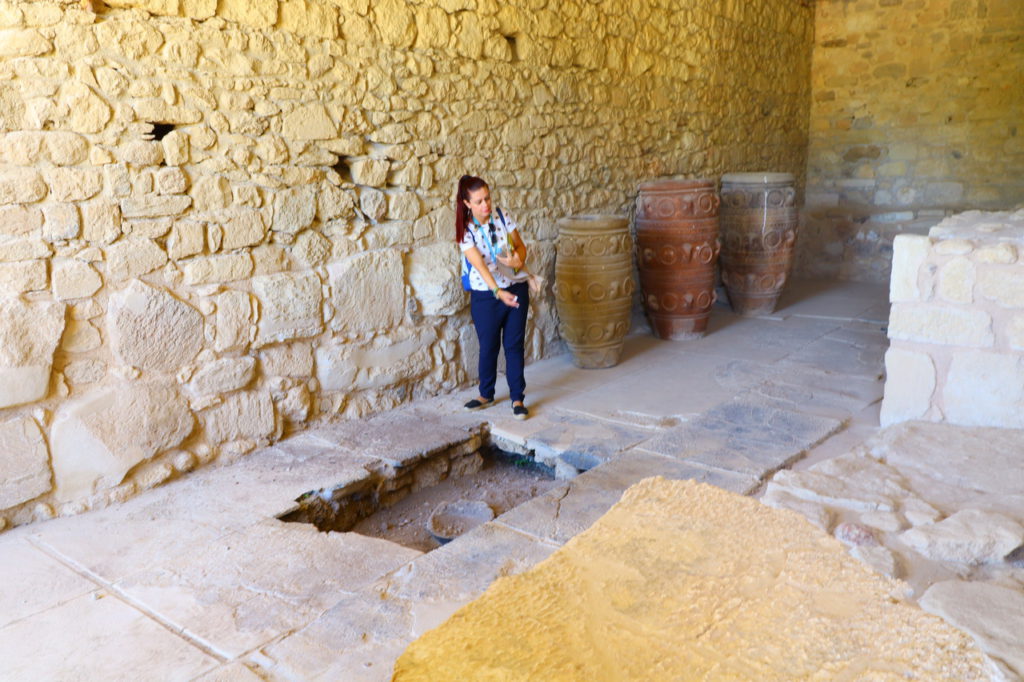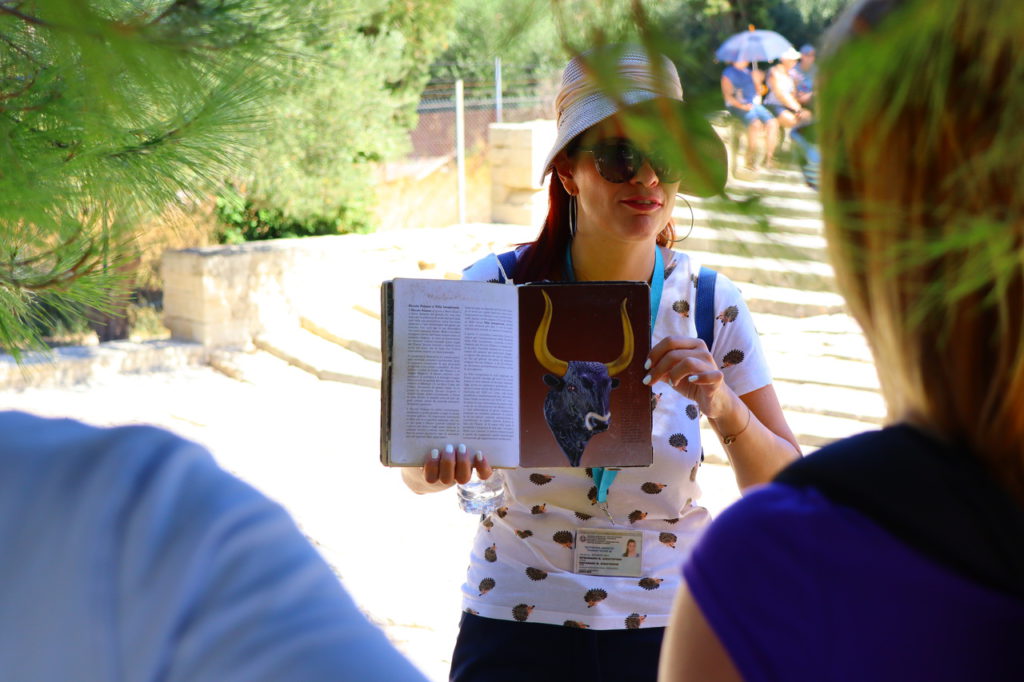Knossos Palace on the Crete island. The center of the oldest European civilization and one of the oldest civilizations in the world. It is the place where the European culture was created. The technologies that were used here, impress even today.
What is so special about this place? How is the Knossos Palace connected with Ancient Greek mythology? And what is the origin of ” Minotaur’s Labyrinth” and “Ariadne’s thread” phrases?
This place tells a lot of exciting stories which we gonna share with you.
Knossos Palace is located only 6 km away from the main city of the Greek Crete island – Heraklion and 75 km from the
Elounda resort, from where we went to the palace by rented car.
As the Knossos Palace is located very close to Heraklion city, we decided to combine a visit to the palace with a walk around Heraklion. But we will tell you about Heraklion walk later.
The road to Knossos Palace is mostly mountainous and very scenic.
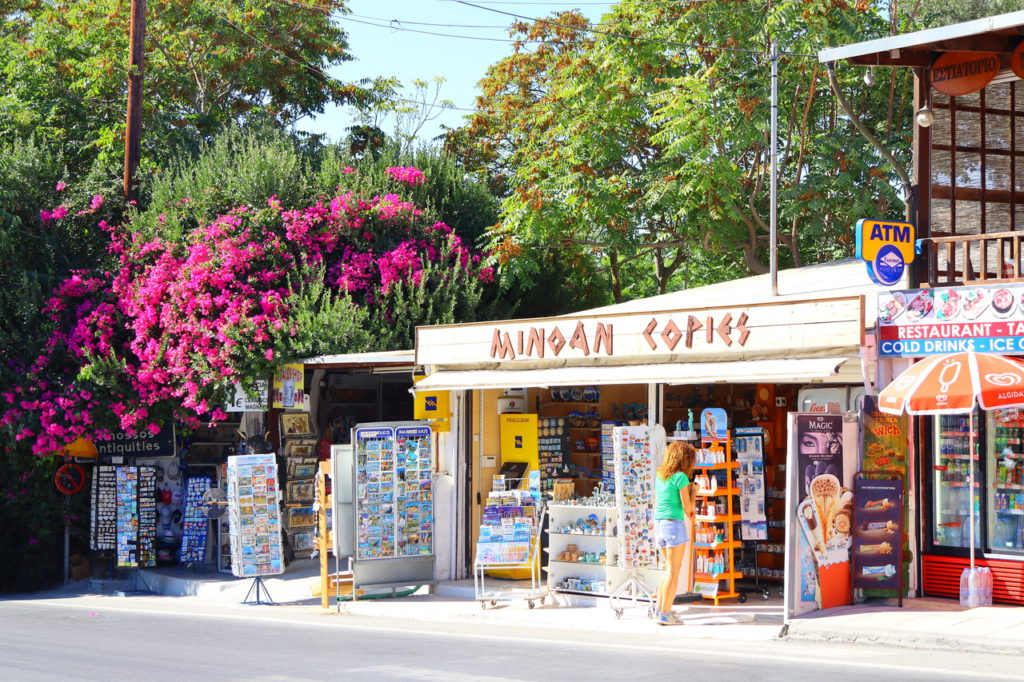
You need to buy a ticket, to enter the archaeological museum complex of Knossos Palace. You can have an excursion here. We wanted to be a part of the English-speaking excursion and had to wait a while for the group to be formed. And this is the place where excursion is highly recommended to feel how significant and legendarios this palace is.
Centre of Minoan civilization
The Knossos Palace was one of the Minoan civilization centers on the Crete island – the first European civilization (Bronze Age III – I millennium BC).
The Minoan civilization flourished during the reign of the mythological King Minos, the son of Zeus. Actually, the civilization was named after Minos. During the reign of Minos, Crete became a rich state, culture and art reached a high level, and the people lived in peace and justice there.
Knossos was one of the most influential cities in the entire Mediterranean at the time of its greatest prosperity and power.
The geographical location of Crete contributed to the development of international maritime trade, which formed the basis of the island’s economy.
Archaeological excavations of the Knossos Palace, which were carried out at the turn of the 19th and 20th centuries. opened to mankind the last, most architecturally and engineeringly perfect palace of the Minoans, which dates back to about 1650 BC.
How was the palace found and restored?
The city-palace of Knossos was found almost by accident. The first elements of the palace complex were found in 1878 by a local resident, who had the same name – Minos (like Minos king of Knossos). The famous English archaeologist Arthur Evans arrived in Crete in 1894 and was interested in this find. Evans tried to find support and financial assistance from the authorities, but everytime he was refused and forbidden to carry out archaeological research. He was tired of looking for help, and bought the whole hill at his own expense. Evans thought this hill was a “buried” under the ground palace. He selflessly financed all the excavations and research, which eventually cost him all the family savings.
What is so unique and progressive about this palace?
Such engineering and architectural wonders as multi-story buildings, natural and artificial lighting, water supply and sewerage, ventilation, heating, and paved paths were used in the Knossos Palace for the first time in the history of mankind.
The most impressive wonder in Knossos is the water supply. The Minoans created a well developed water control system in the palace. Water was supplied from a mountain spring 12 km away from the palace through clay pipes. Tanks with fresh water were created in the palace. It is believed that Knossos is the first city in mankind history that used water toilets with sewage.
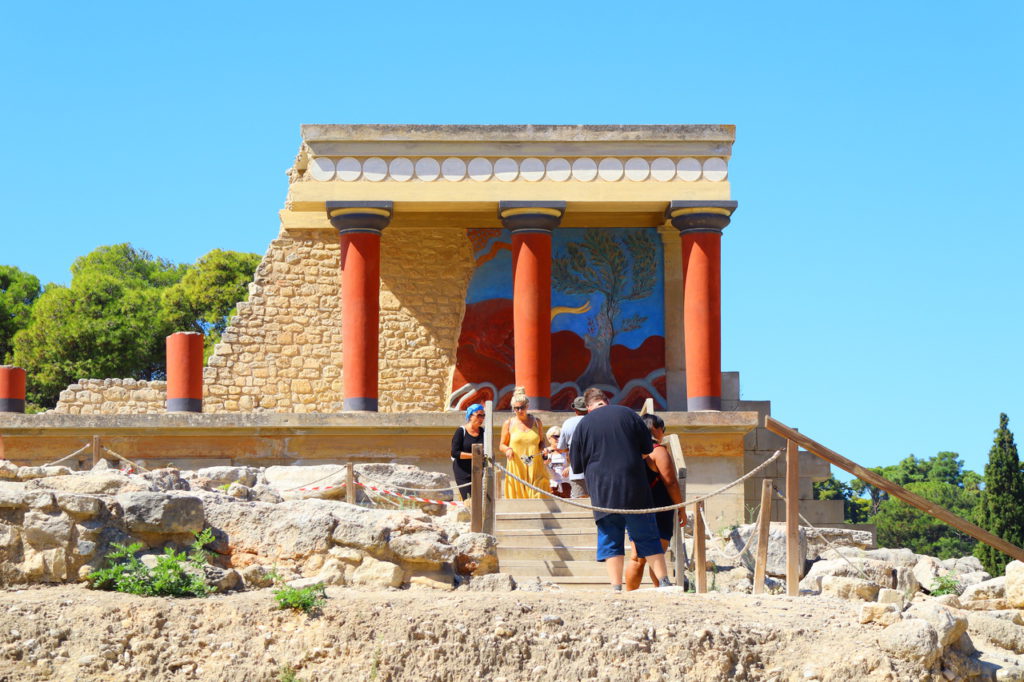
The palace of prince was connected to the main building by an artificially created cobbled path, which was laid in the middle of a “corridor” with stone walls. The path was kept to our time almost completely saved. The road surface, in addition to the outer stone pavement, also has several deep layers. Thus, the Minoans invented the technology of building durable roads many centuries before the Romans. Modern residents of Crete call the path to the Palace of prince “the first paved road in Europe.”
Origins of the Ancient Greek mythology. “Minotaur’s Labyrinth” and “Ariadne’s thread”.
According to an ancient Greek myth, the labyrinth was built by Daedalus with his son Icarus to keep the Minotaur. The Knossos Palace is the very “labyrinth”, where the legend of the Minotaur began. By the legend, the monster Minotaur (the bull of Minos) ate 7 young men and 7 girls every year.
The roots of this legend most likely came from the bloody type of sport or athletic entertainment that was quite popular during the heyday of Knossos. This so-called game is depicted in one of the most famous Knossos frescoes “Bull-leaping”, which everyone can see today on the walls of the palace.
According to the rules of this game, the athlete had to grab the bull by the horns and leap over its back. Both young men and women took part in the entertainment – this is also known from the fresco. This sport was supposed to be quite traumatic and in some cases fatal.
Another well-known myth related to the Knossos Palace is the myth about the Ariadne’s thread, the daughter of the Cretan king Minos and queen Pasiphae.
When Theseus decided to kill the bloodthirsty Minotaur, and thus rid his homeland of the monster, he received a ball of thread from the loving Ariadne, which led him out of the labyrinth where the Minotaur lived. Having performed a heroic deed, Theseus ran away with Ariadne to the Naxos island.
The expression “Ariadne’s Thread” is very well known today. It means a method that helps to solve some difficult problem, to find a way out in a difficult situation.
What treasures were found in the palace?
The Knossos city-palace is a huge multi-storey building that combined living quarters, sanctuaries, storerooms, secret storehouses, and a central square for general meetings. Half a kilometer from the main palace was the so-called “Palace of Prince”, a much smaller building. Rather large reserves of food and water were stored in the basements of Knossos, probably in case of drought, natural disasters, or a possible war. Hiding places were found under the huge amphorae for grain and oil. Some precious stones were kept there. As it turned out later, those stones were brought from Egypt. The Minoans had well trade relations with this country.
The most famous frescoes of the Minoan civilization
Most of the well known Minoan frescoes, (their originals are now exhibited in the Heraklion Archaeological Museum), are restorations. Evans found only fragments of frescoes. Later, after a long hard work, it was possible to separate and sort the fragments according to belonging to one or another image. Thus, one of the most famous Knossos frescoes, “Bull-leaping”, contains 30% of authentic fragments – the rest has been restored in our time. Another famous fresco, “The Talking Women”, is 15% made up of authentic fragments found during the excavations at Knossos.
Why did such a prosperous Minoan civilization disappear?
Minoan Knossos, by all evidences, is most likely was destroyed instantly. Today, the main hypothesis explaining the sudden disappearance of Knossos is a catastrophic volcanic eruption on the Fira (Santorini) island in the Aegean Sea, 110 km north of the Crete island. Although the buildings of Knossos mostly survived, a lot of inhabitants and the whole Minoan fleet drowned in the gigantic tsunami wave caused by the eruption and consequently the earthquake. The city state was completely dependent on trade relations with other Mediterranean civilizations. The death of the trade fleet obviously was the reason for the beginning of the Minoan civilization decline.
The following facts confirm this theory:
- At that time the Minoan civilization had no serious enemies, who could cause a war conflict and influence the development of this city-state.
- The clear coincidence of the eruption with the beginning of the rapid fading of civilization.
- The crushed wreckage of Minoan trade ships found on top of the Cretan mountains – they could have gotten there in no way, except on the tsunami wave.
The story of the Knossos Palace and the facts about the very well developed Minoan civilization at that ancient time impressed us so much. The Knossos Palace is probably the most significant place on the Crete island, which is definitely worth visiting during the vacation on Crete.
Author (c): Iryna Melnyk
Photos (c): Mykola Melnyk

